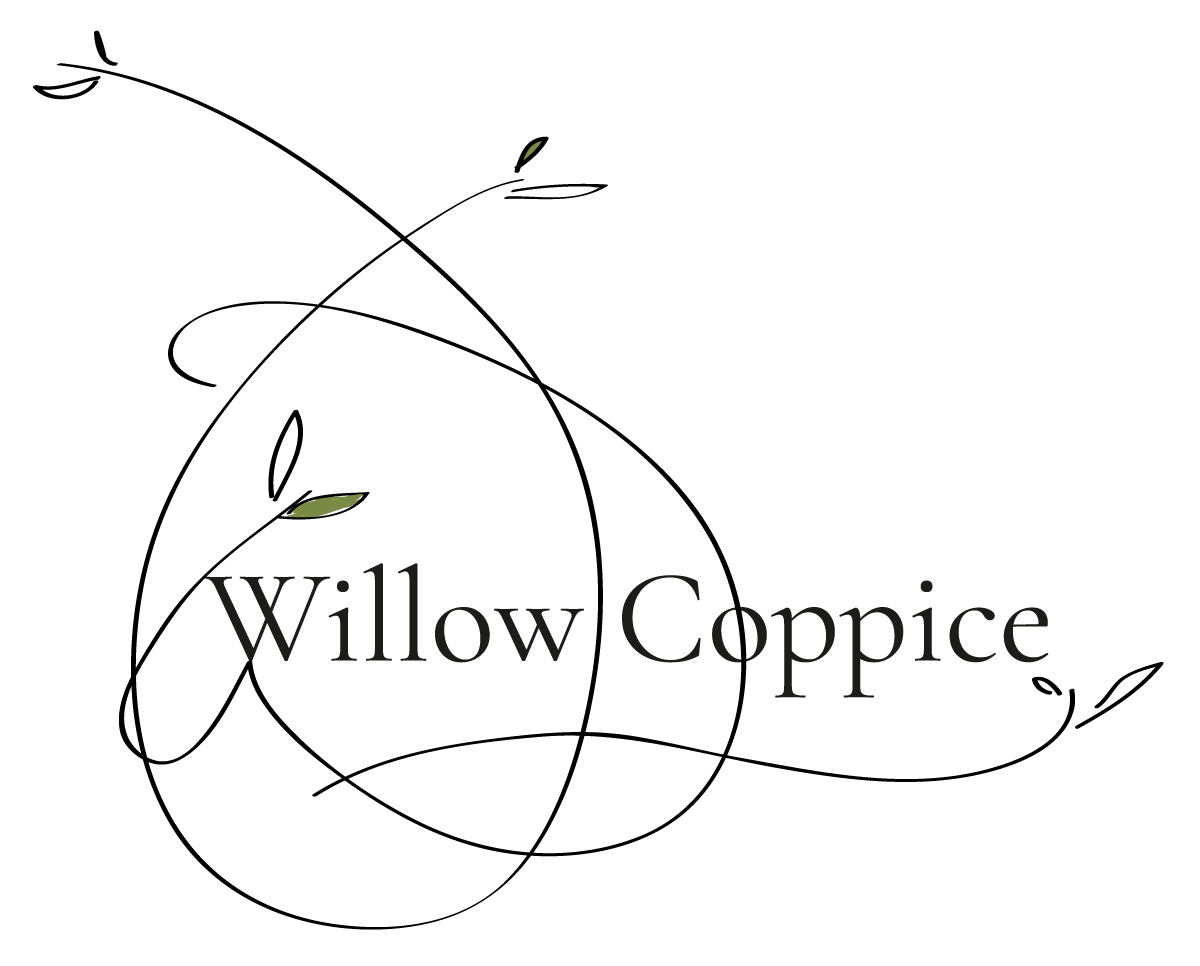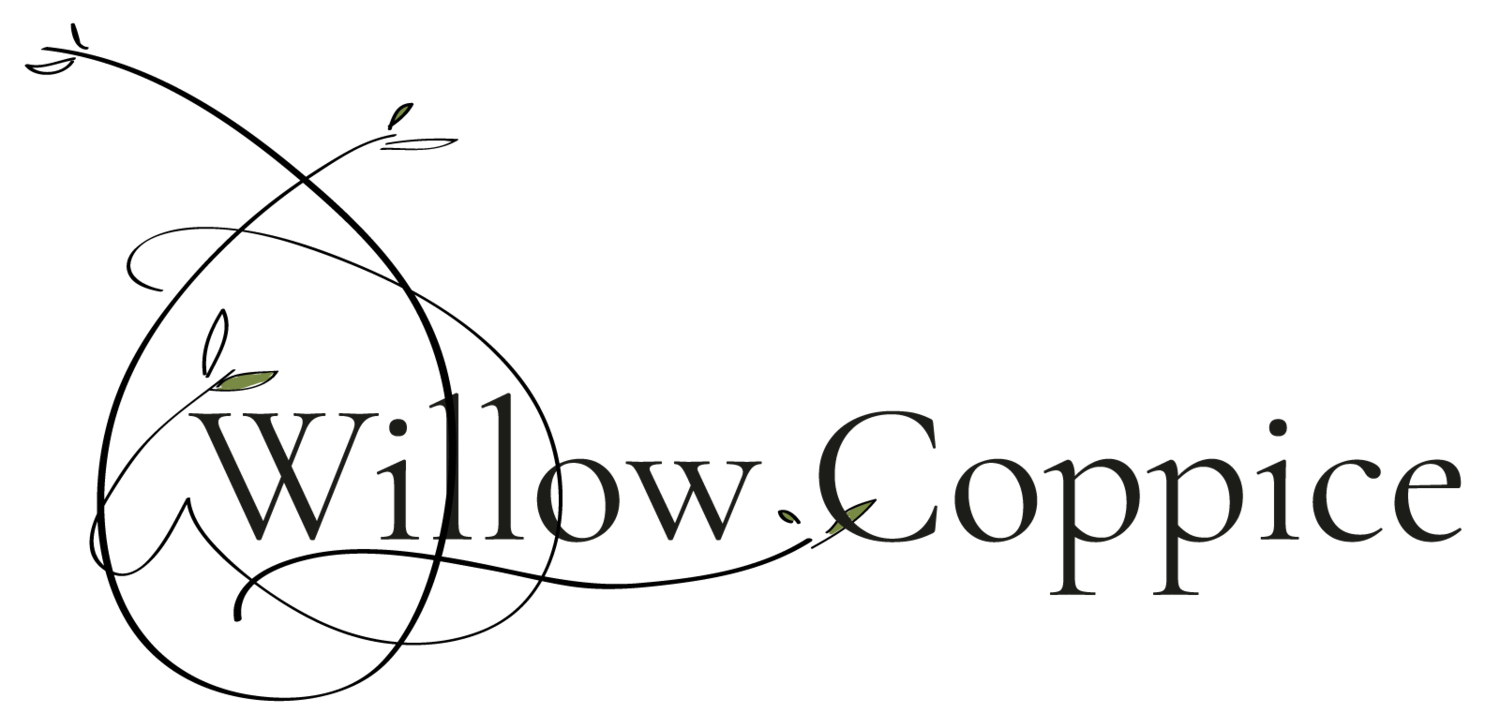
Our sites & story
The story
Willow Coppice is a project of growing willow for installations, basketry and green woodworking, whilst promoting biodiversity through an organic mixed coppice model sometimes also known as micro-forestry.
Micro-forestry is planting tiny, dense forests, based on the practice of the Japanese botanist Akira Miyawaki, who has planted more than 1,000 such forests in Japan, Malaysia and elsewhere. Micro forests can grow 10 times faster and become 30 times denser and 100 times more biodiverse than those planted by conventional methods.
Our project is to grow and harvest willow for making artwork and commissions alongside planting native trees and hedgerows, and encouraging as much wildlife as possible to thrive on the same sites.
We have several growing spaces, and the stories of these are below…..
Wood Farm: Foraged or donated trees, loaned land, and green futures: a sustainable model.
Wood Farm
Paul Tomlin, a master craftsman, waggon maker and small holder generously offered us our first willow coppice site on his plot, Wood Farm.
To set up this site it was absolutely brilliant to get donations of spare trees, plants and self seeded saplings from the community, which makes the growing even more special. We asked people in our village to save any unwanted hazels and hawthorns or other native trees they found in their gardens, so each of these saplings and seedlings have their own little history.
In 2020 we were granted a Woodland Trust grant for more trees, topping up our community hoard of trees and willows this allowed us to plant some 2000 saplings on this site.
We’ve created a willow fedge (living fence/hedge), and a miniature orchard of apples, pears, quince and medlar from the community donations.
Around the edges of the site we have planted hazels and ash for coppicing, and edible hedgerows of hawthorn, blackthorn (sloes), plums, elder and crab-apple.
At Wood Farm we have several different varieties of willow: Flanders Red, a greeny-red willow, Yelverton which is bright red, Norbury which is very delicate and dark purple, the wonderful golden Jaune Hative, dark brown Noire de Villaine, green Osier, and light brown Dickie Meadows. We’ve also planted Daphnoides Continental Purple, which is shiny dark purple like black chocolate, a golden-red Chermensina, White Welsh, Coho Blue, Blue Stem, contorted willow, and some giant Swedish Osier.
And running though it all we’re allowing the wildflower meadow to run riot
Wood Farm: First sight on the site, and planting begins
Willow must be planted in the winter, before the leaves bud up around late March or early April
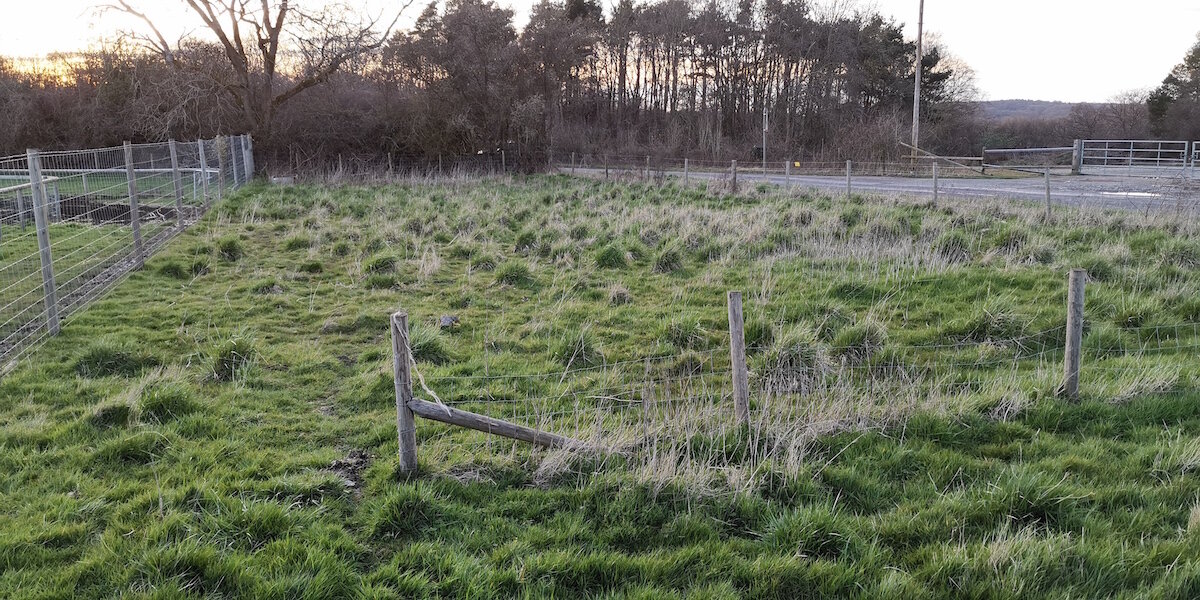
The empty plot

Setting out the beds in block for different varieties of willow
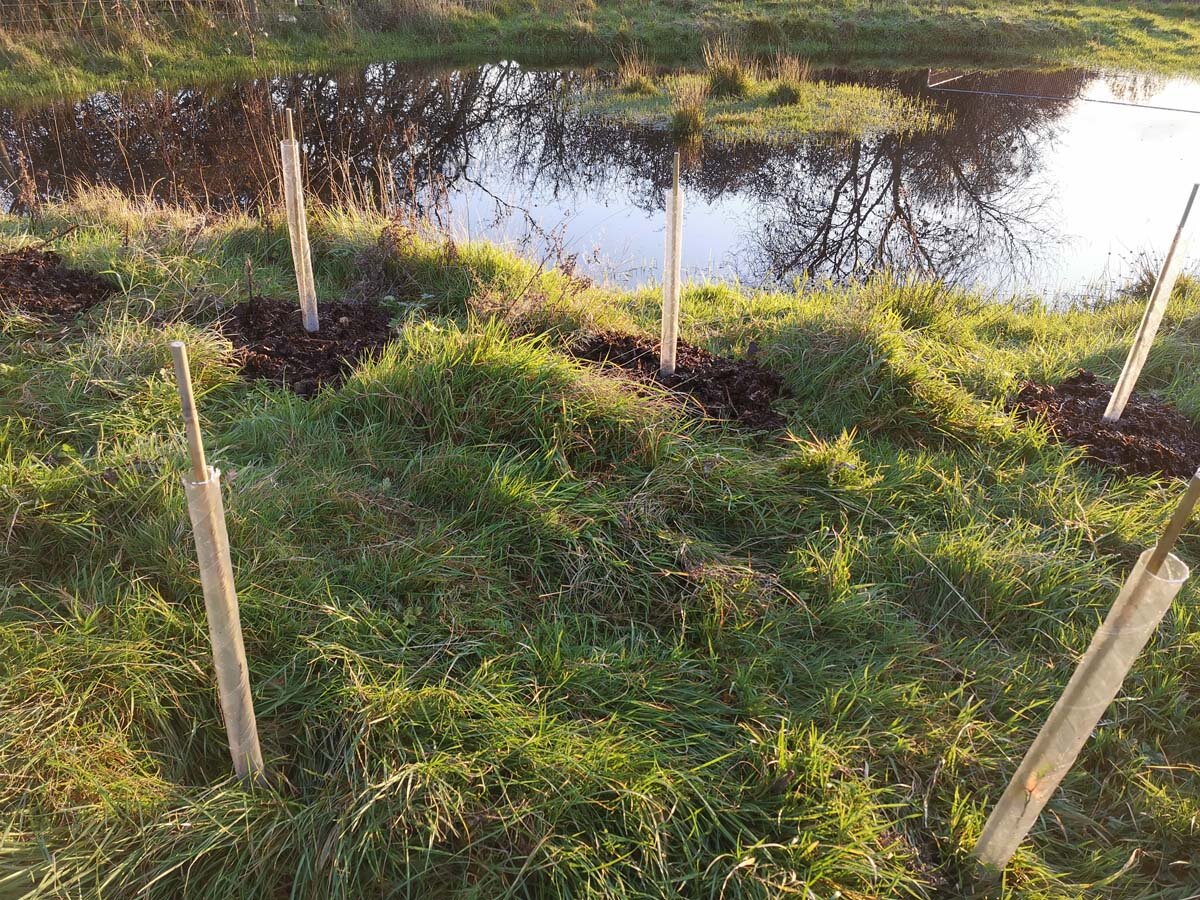
Native trees planted next to the wildlife pond

Willow catkins are one of the first foods for pollinators each Spring

First growth on the willow rods
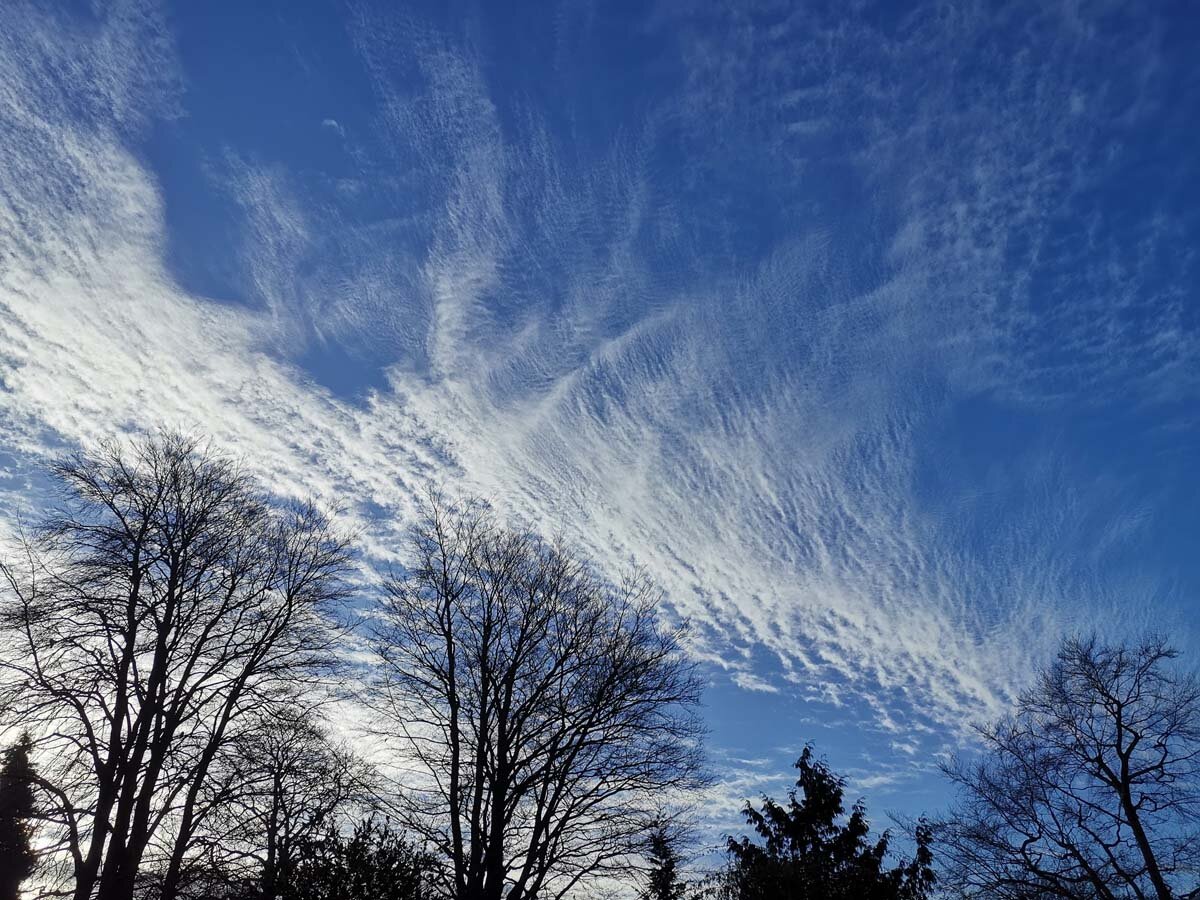
Planting has to be finished by the end of March

Spring and early shoots of willow

In spring the willow rods start to shoot, and by early summer the site is beginning to bloom
We've left space in the of the site centre for “making and doing”. We will be making basketry, in-situ sculptural pieces, fencing and hurdles and we'll be gathering for green woodworking, making art, courses, teaching, and conversing round a campfire.

Willow rods sprouting in mid-Spring

Late Spring

A willow 'fedge' or living fence / hedge

Young willow - red flanders

Early summer

Apple blossom

Young osier
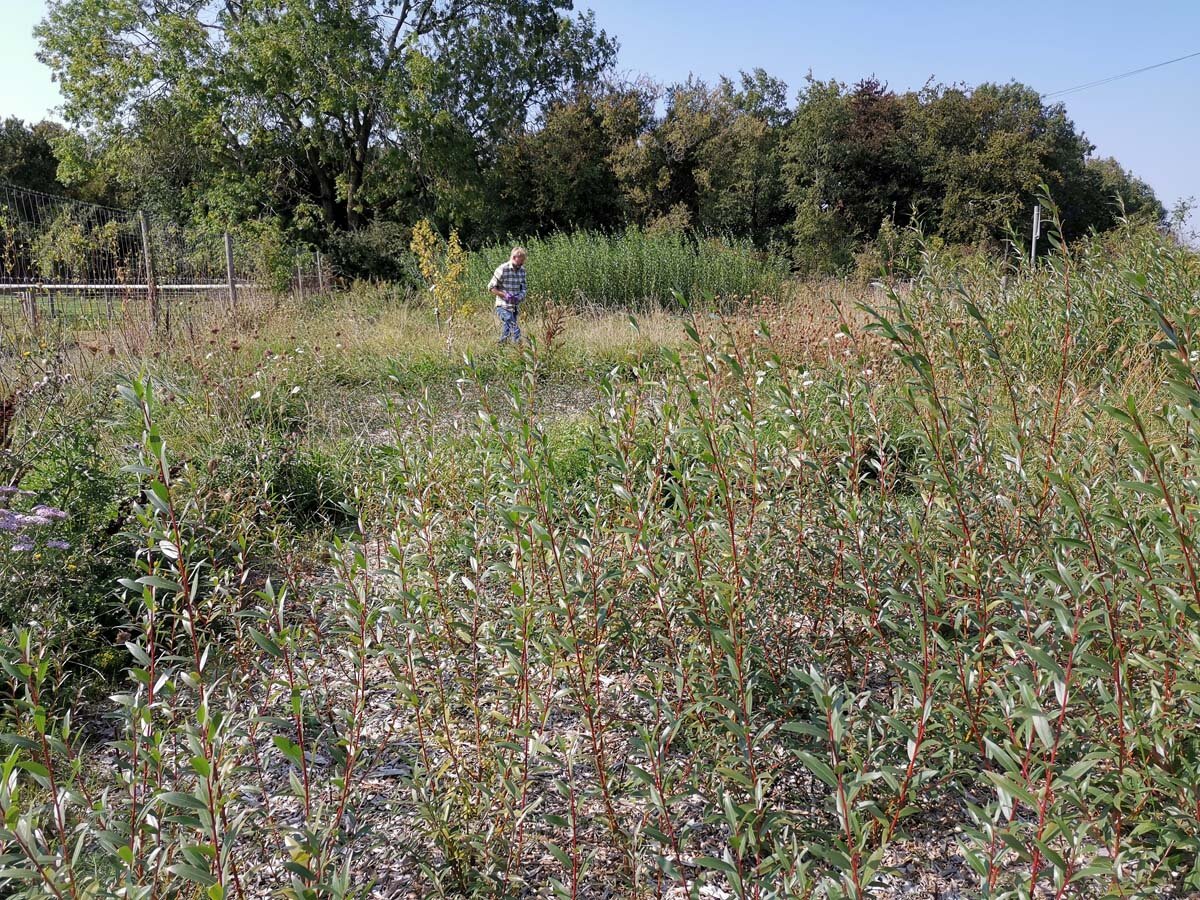
By June the willow is shooting up fast

Young growth

The first ox-eye daisies in early summer

Our lovely neighbours the Herdwicks
By mid summer the meadow grasses and flowers are flourishing
Watching the wildflower meadow springing into life; the whole site is alive with pollinators, birds, and some extraordinary caterpillars.
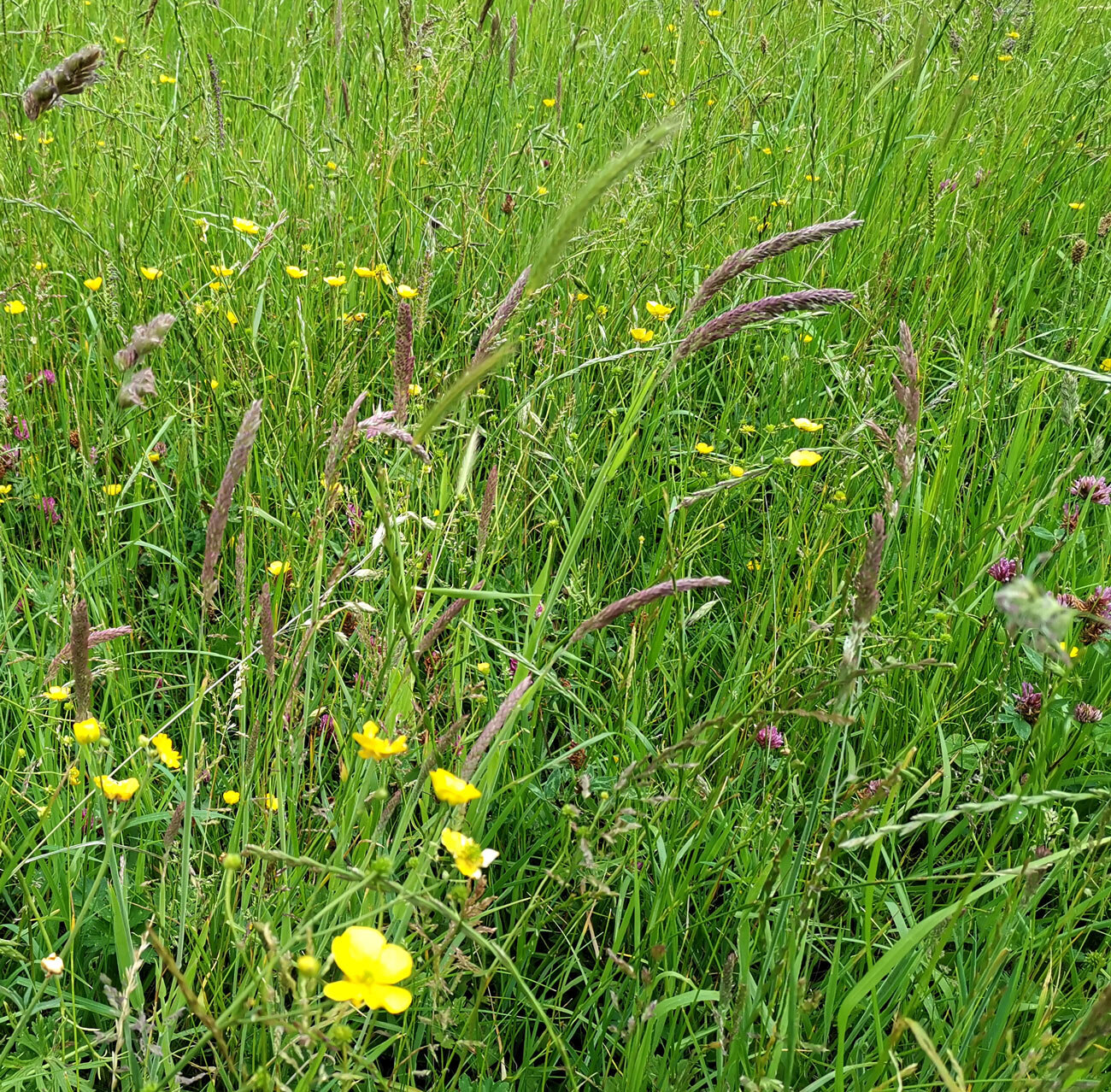
Buttercups and budding flowers in the meadow grass

Wild flowers and willow growing side by side

Our neighbours the Herdwicks taking to the shade
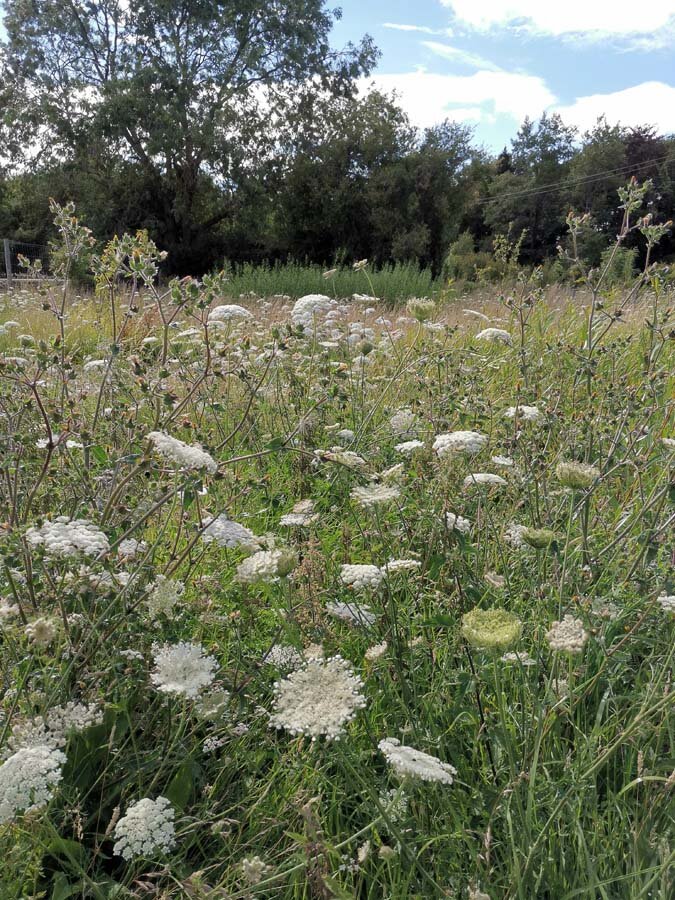
Early August in the meadow

Soldier beetles in wild carrot flowers
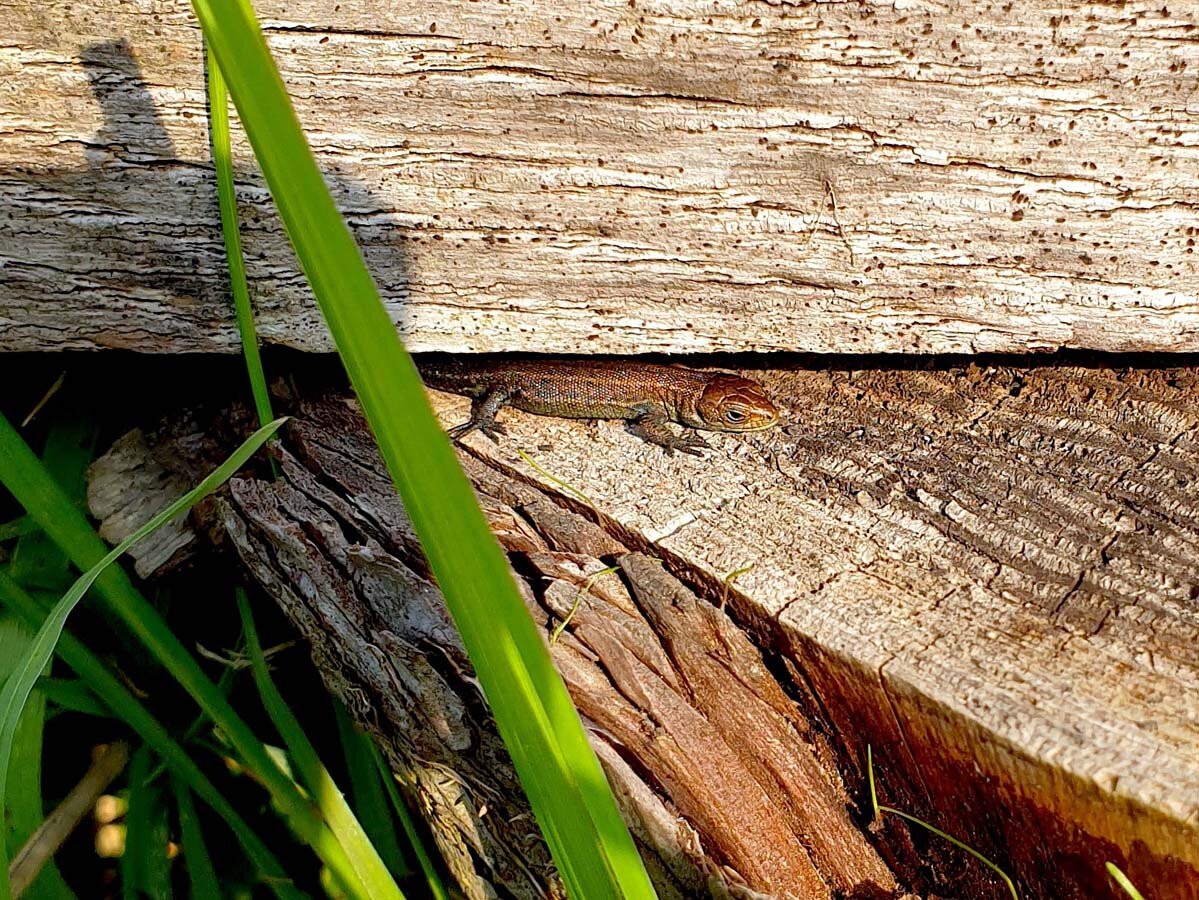
A sunbathing lizard

High summer
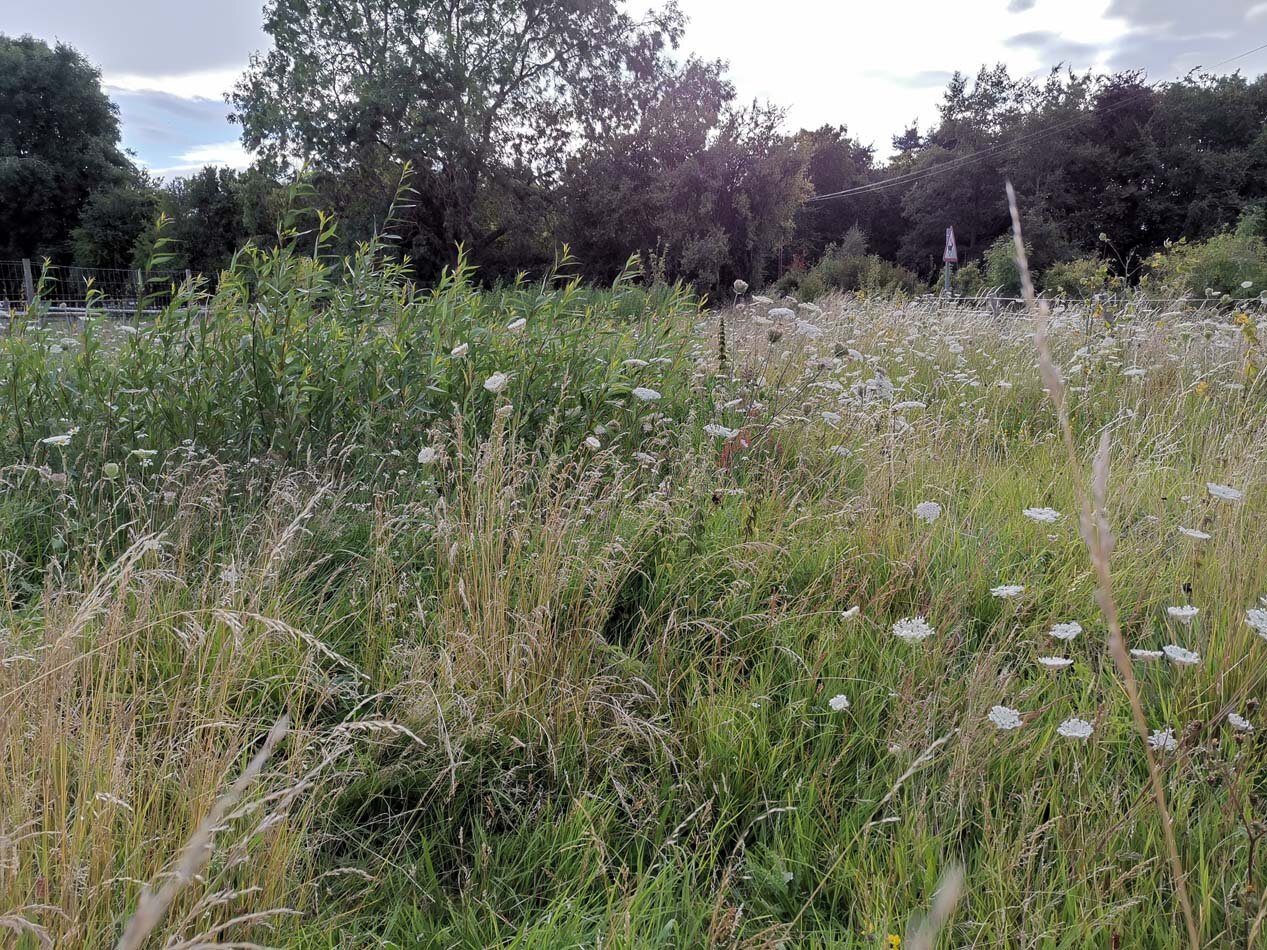

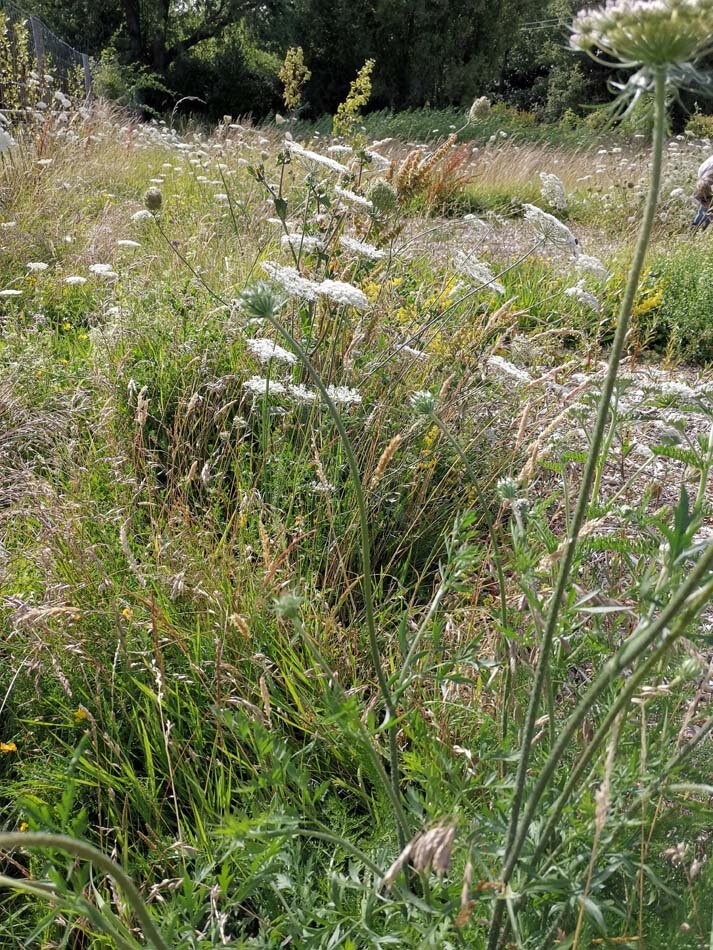
Autumn, and Winter Harvesting
We harvest with some "set-aside” willows each year, which will encourage new wildlife. The fresh rods can be used for planting. We then size and bundle the “green” willow ready for green work or drying, to then be soaked later in the year for basketry.

Autumn colour on Noire de Villaine willow

Leaf drop reveals the rods or 'withies'
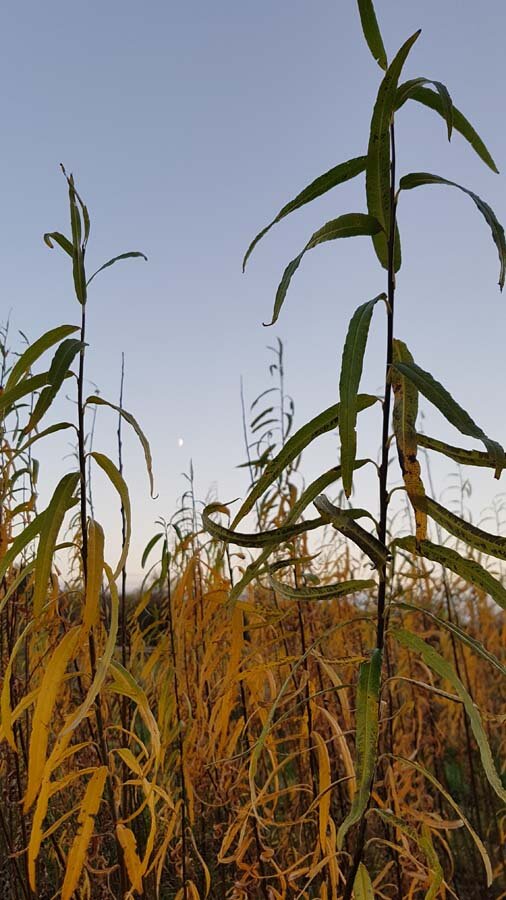
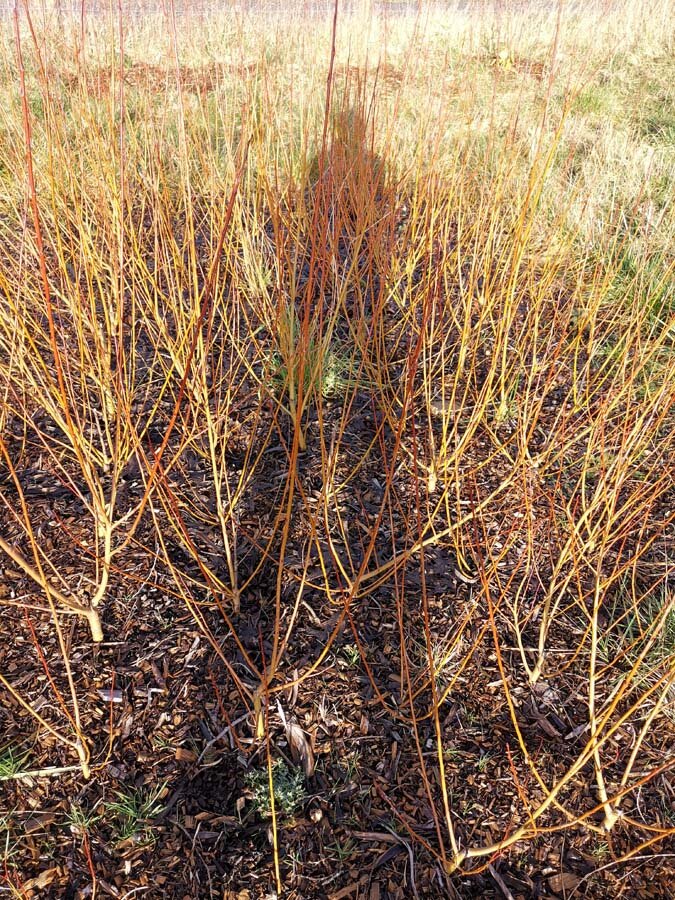

Autumn colour on Jaune Hautive variety

Keeping warm and making tea is quite important

Once all the leaves have dropped we can start cutting
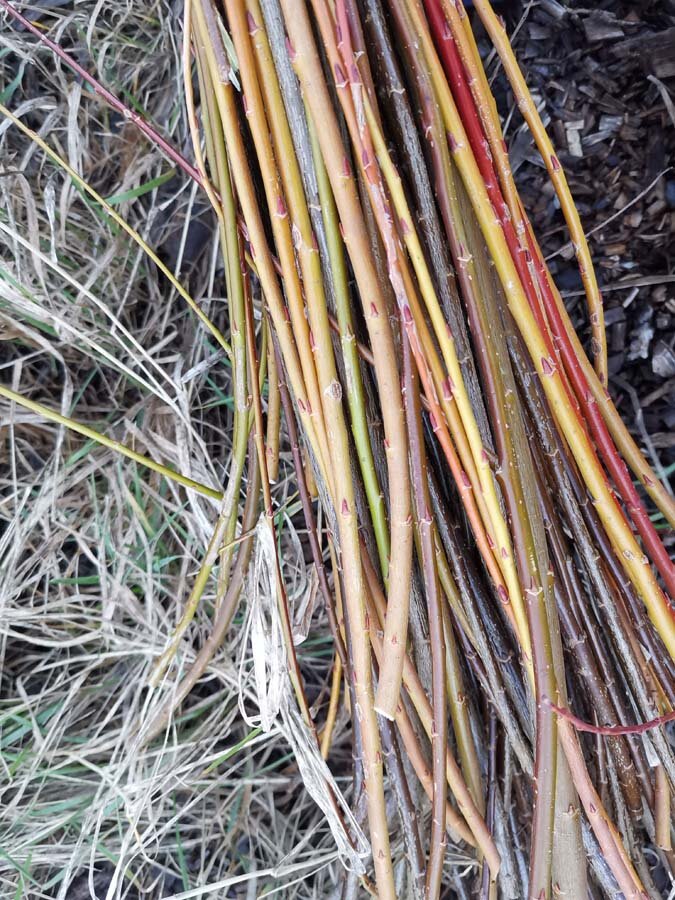
Mixed willow colours

Contrasting greens and fiery orange rods

Willow rods sorted by length


Colourful bolts of different varieties of freshly cut willow
And working with friends and volunteers
Central to it all is working with lovely people who want to be outside and share stories and knowledge!






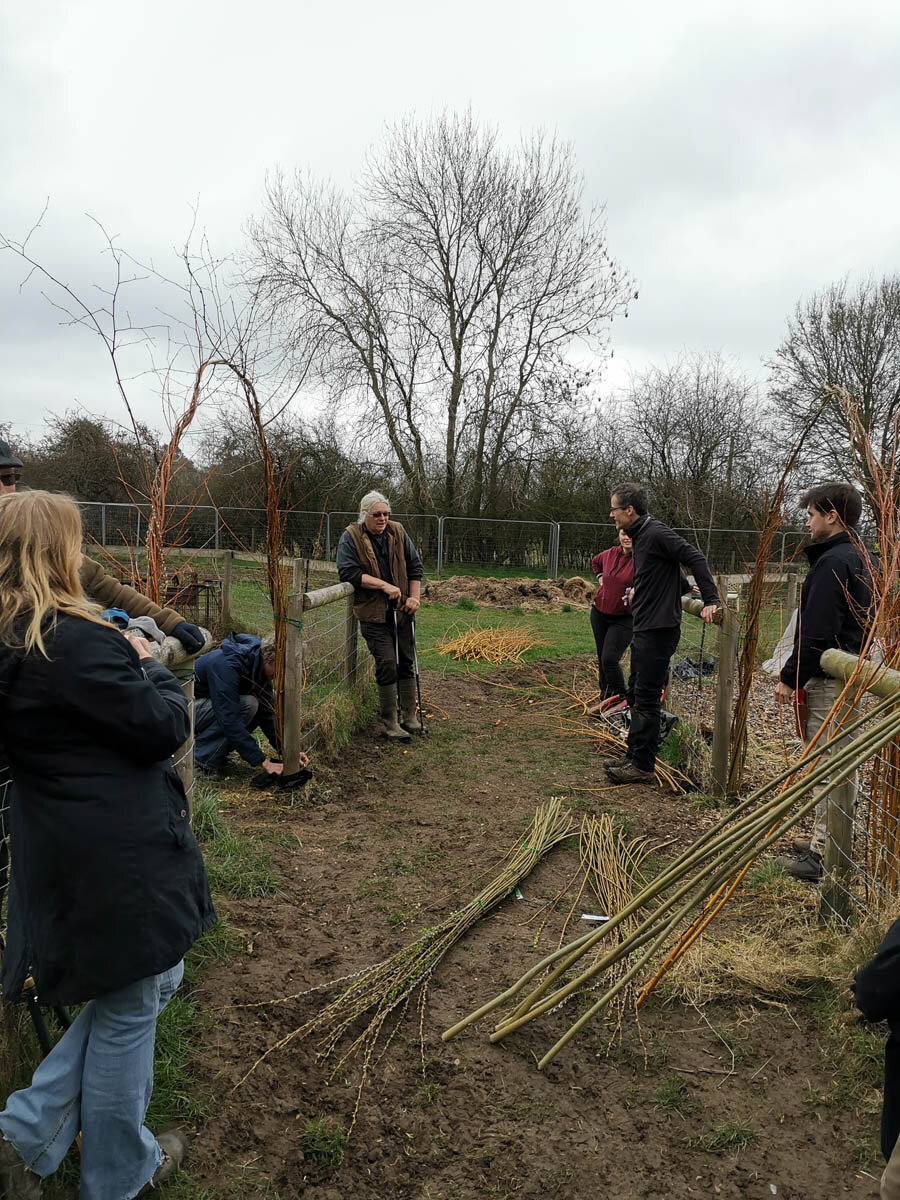




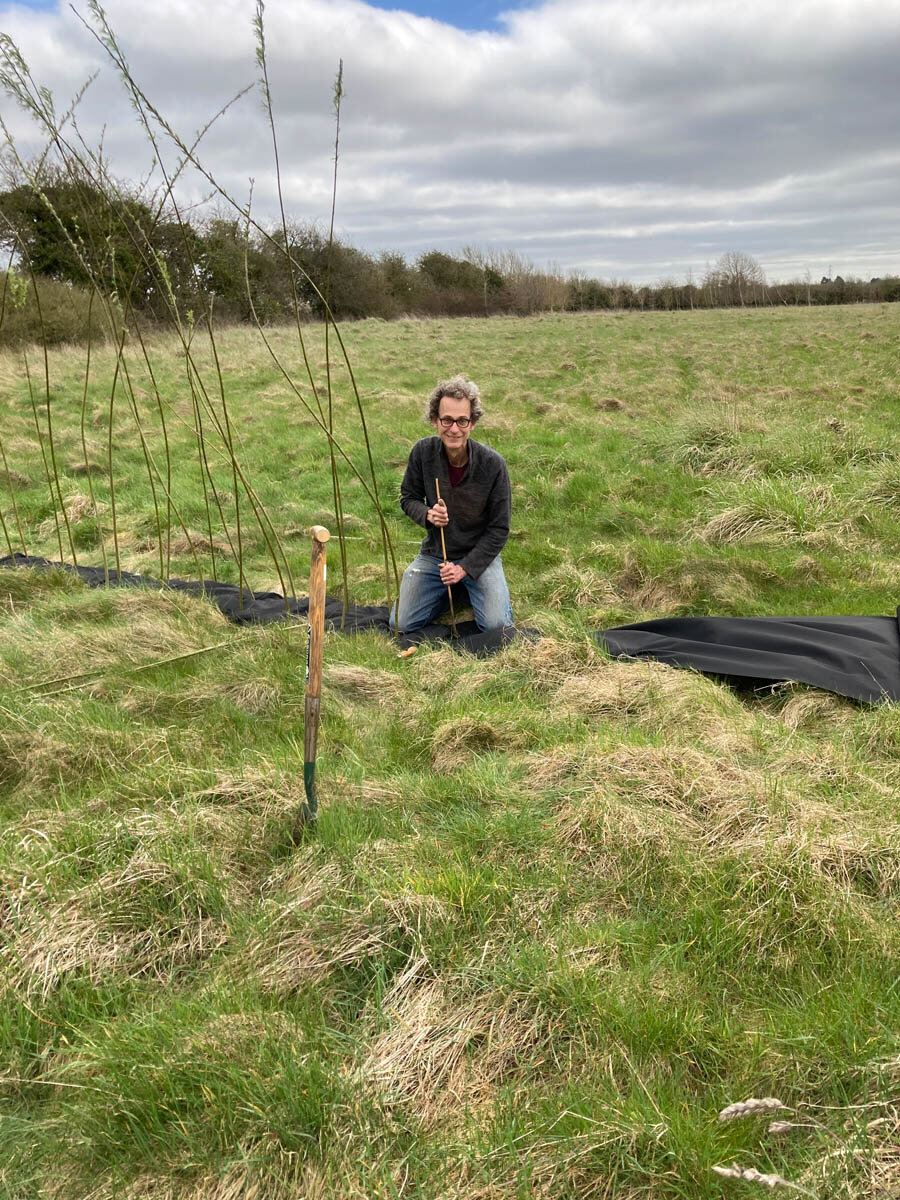

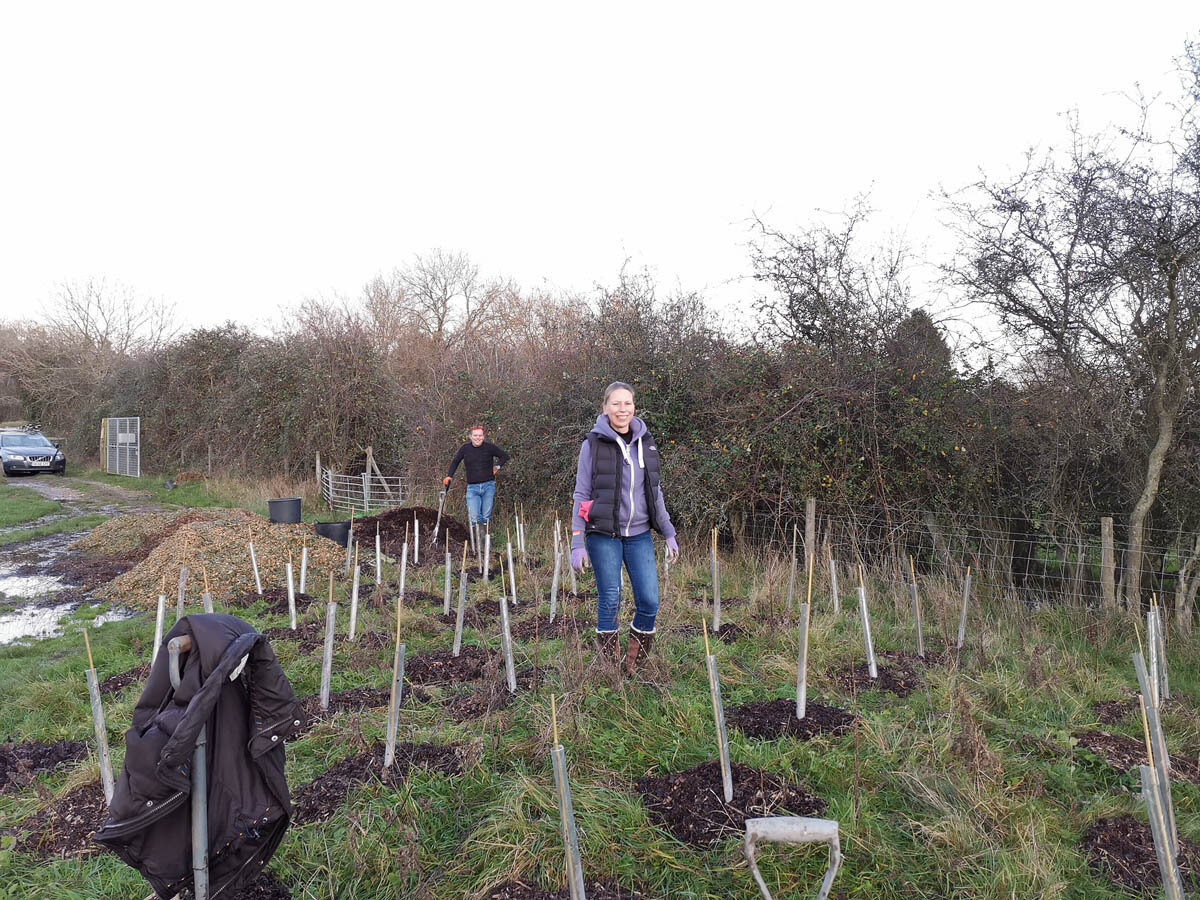
Can you help us with coppicing?
To find out more about working with Willow Coppice, or if you have space, land or trees to donate, please get in touch
Peace Oak: Community Orchard
Peace Oak
At the heart of this 2 acre community orchard is a 100+ year old oak tree, planted to commemorate the end of the first World War. A shared growing space in the centre of Eynsham village, providing an area for friends and families to come together.
We set up a new willow growing bed here with the help of the Peace Oak community.
Foraged local willows
We gathered willow from Long Mead on the banks of the river Thames, the home of Eynsham’s Nature Recovery Network’s Catriona and Kevan, to establish the willow bed at Peace Oak.
Further donations of willow from Hill End and from Andy’s Welsh willow allotment means that there are multiple different species growing in the orchard.
A community effort of preparing new beds
Great teamwork. Firstly preparing the bed, then planting the foraged willow. Finally weaving a willow rope border around the edge to finish it off.

Forming a bow shaped bed with the help of volunteers

The willow rods are planted with mulch to suppress the grass
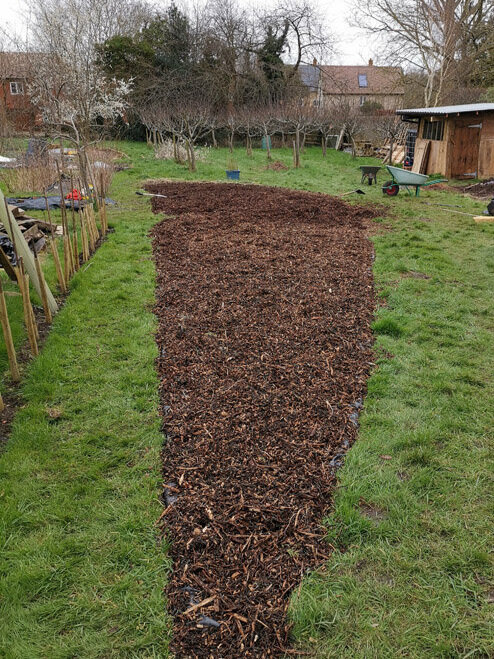
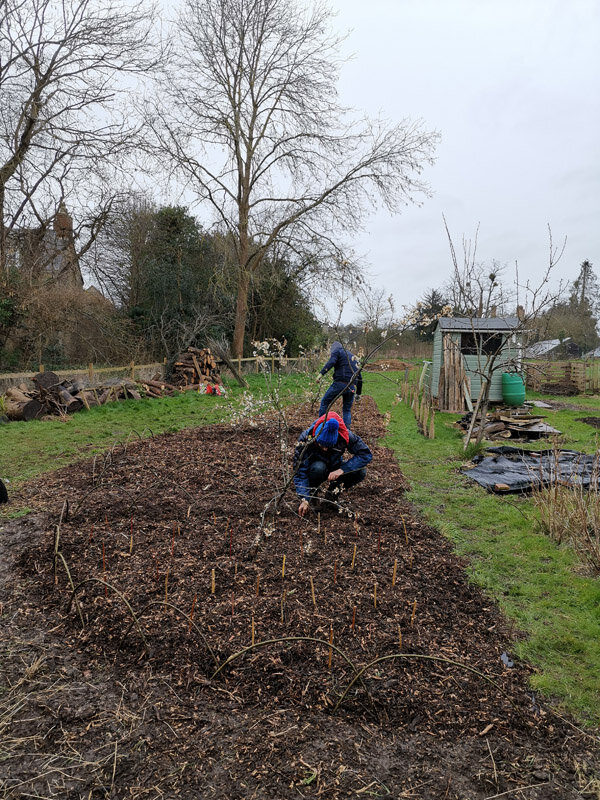

Willow will grow from just a short stick - so long as you plant it the right way up

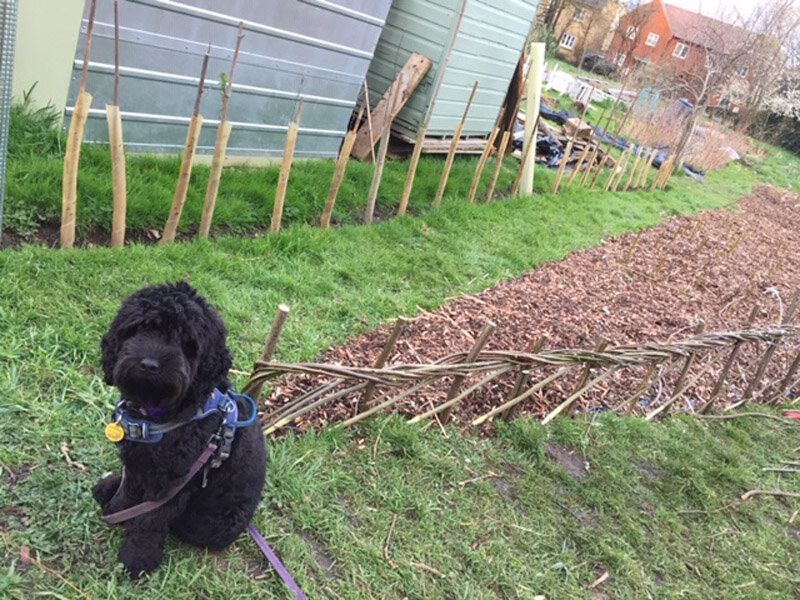
Bear the dog
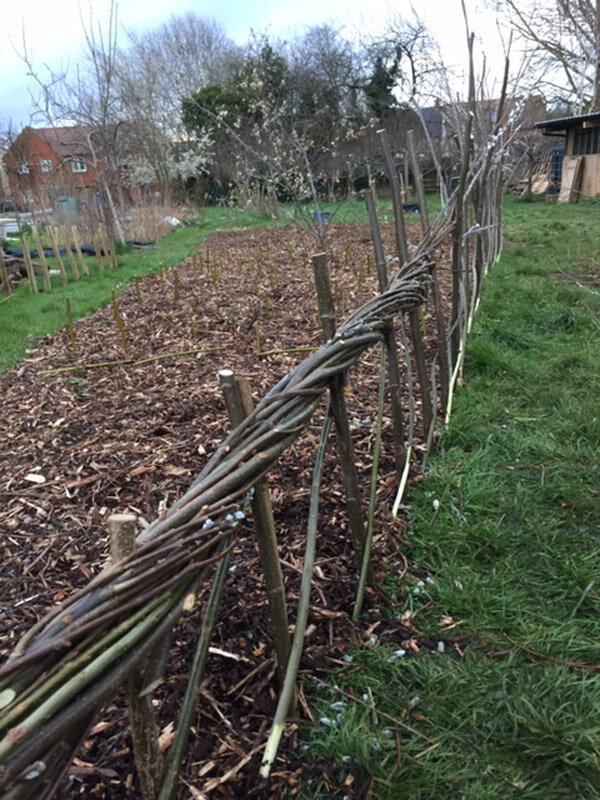
Rope twist border

We planted five different varieties at Peace Oak
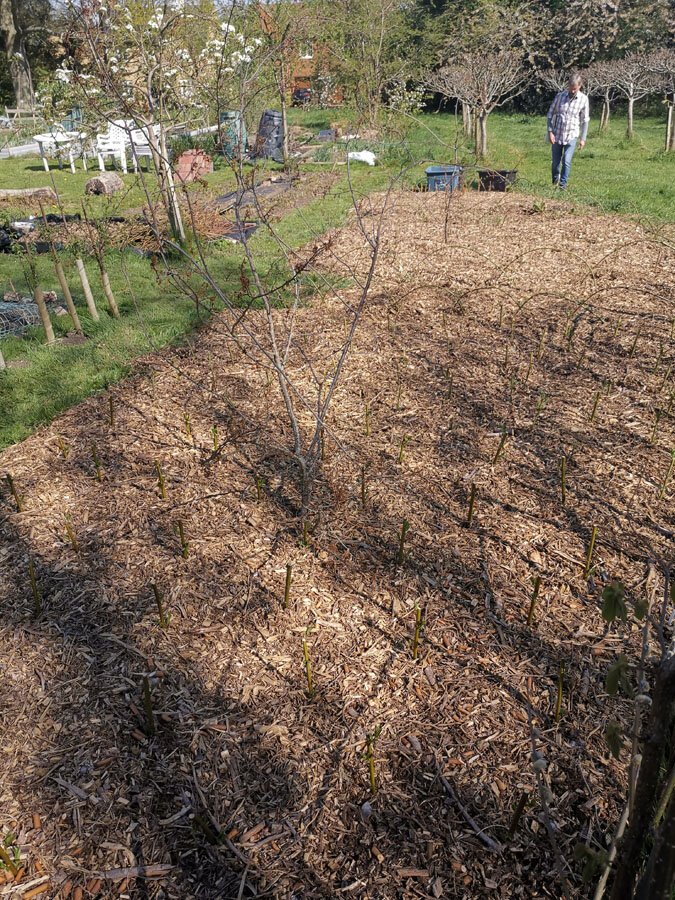

New shoots
It never ceased to amaze how quickly willow grows, by mid May the tiny sticks of Osier are sending out new shoots.
The varieties planted in this allotment include purple osier, common osier, Yelverton which is a fiery orange, and Flanders Red, a beautiful basketry willow which is green to red when growing, and dries to a lovely burnt orange.
High Summer
The willow is a wash of green, some nearly 2 metres tall
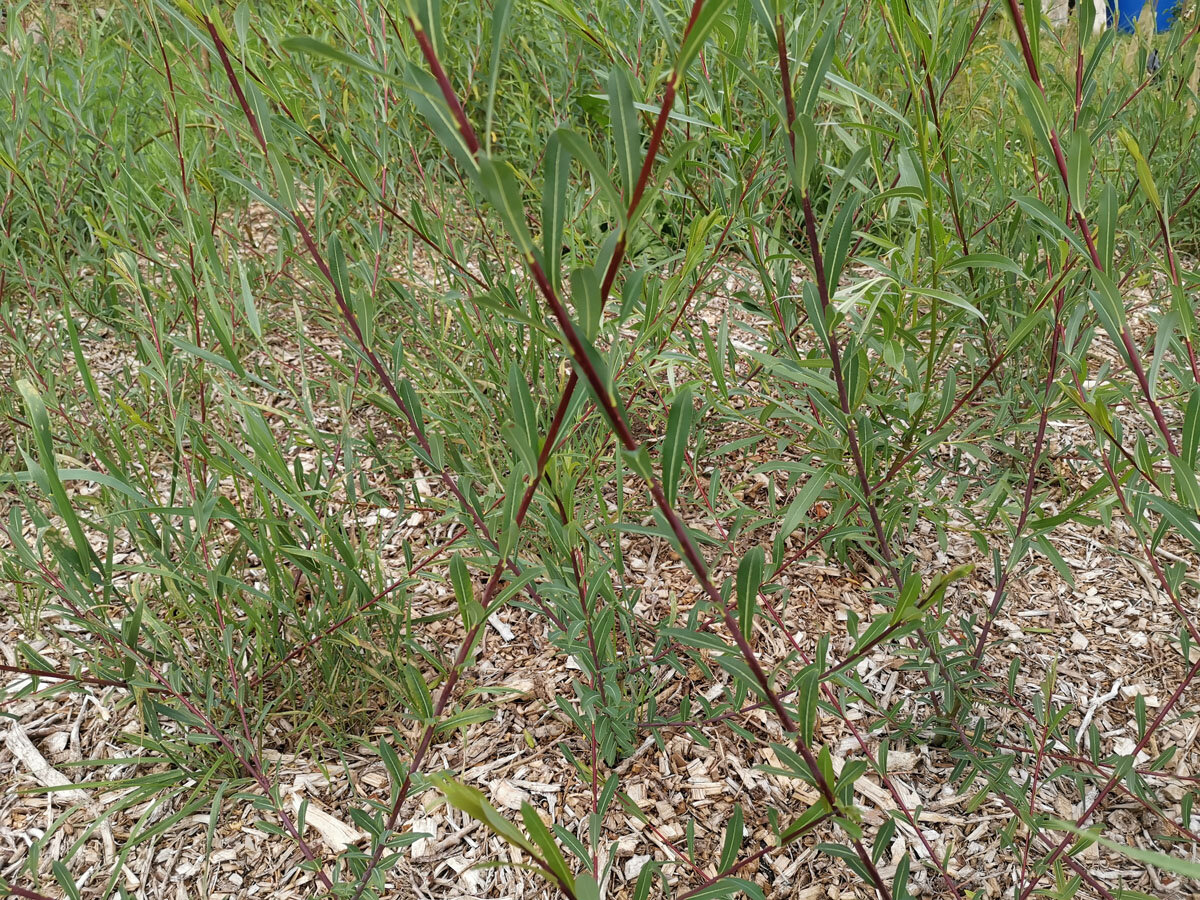
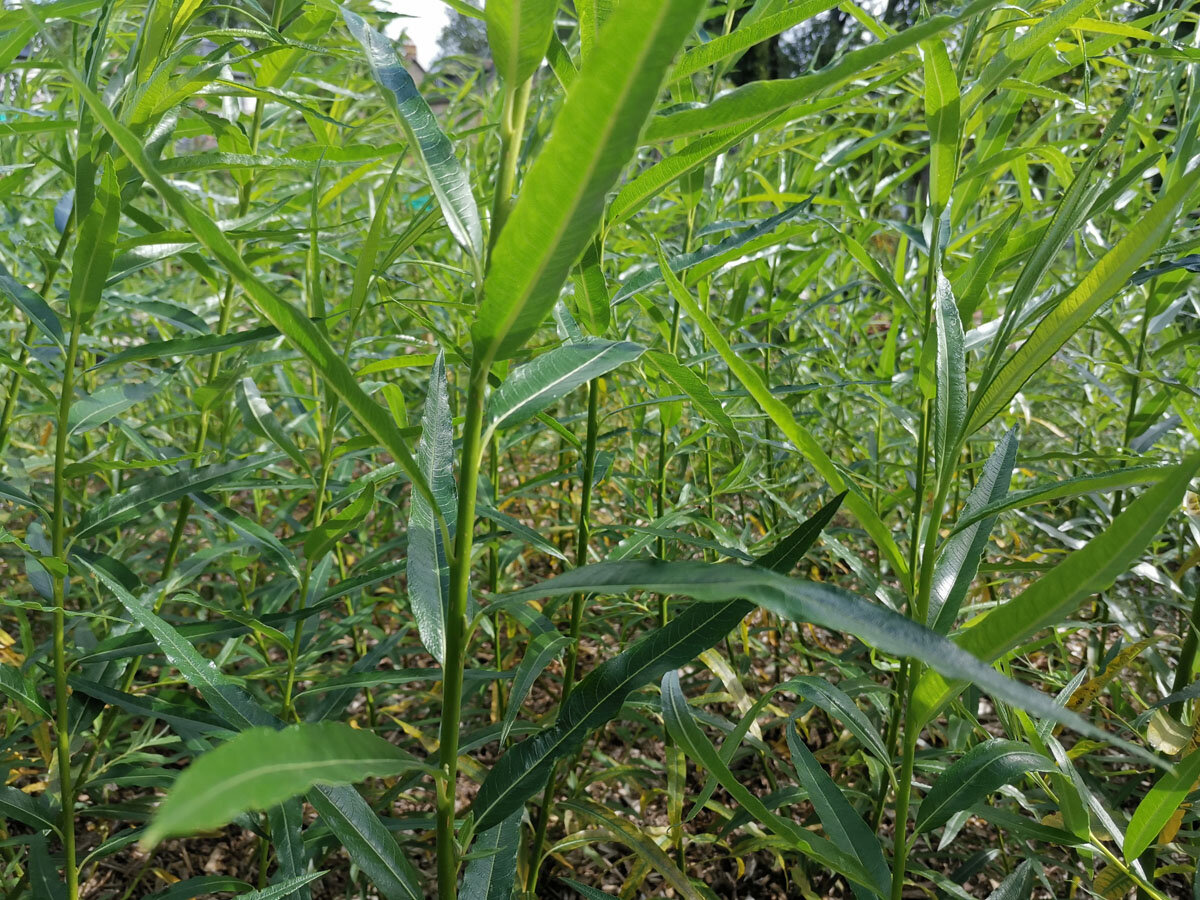




First season’s growth in early Autumn
Once this Salix purpurea (Purple Osier) is mature, the rods can grow up to 3m tall in each season.


Salix Purpurea is a particularly beautiful 'wafty' variety with lovely long slim rods
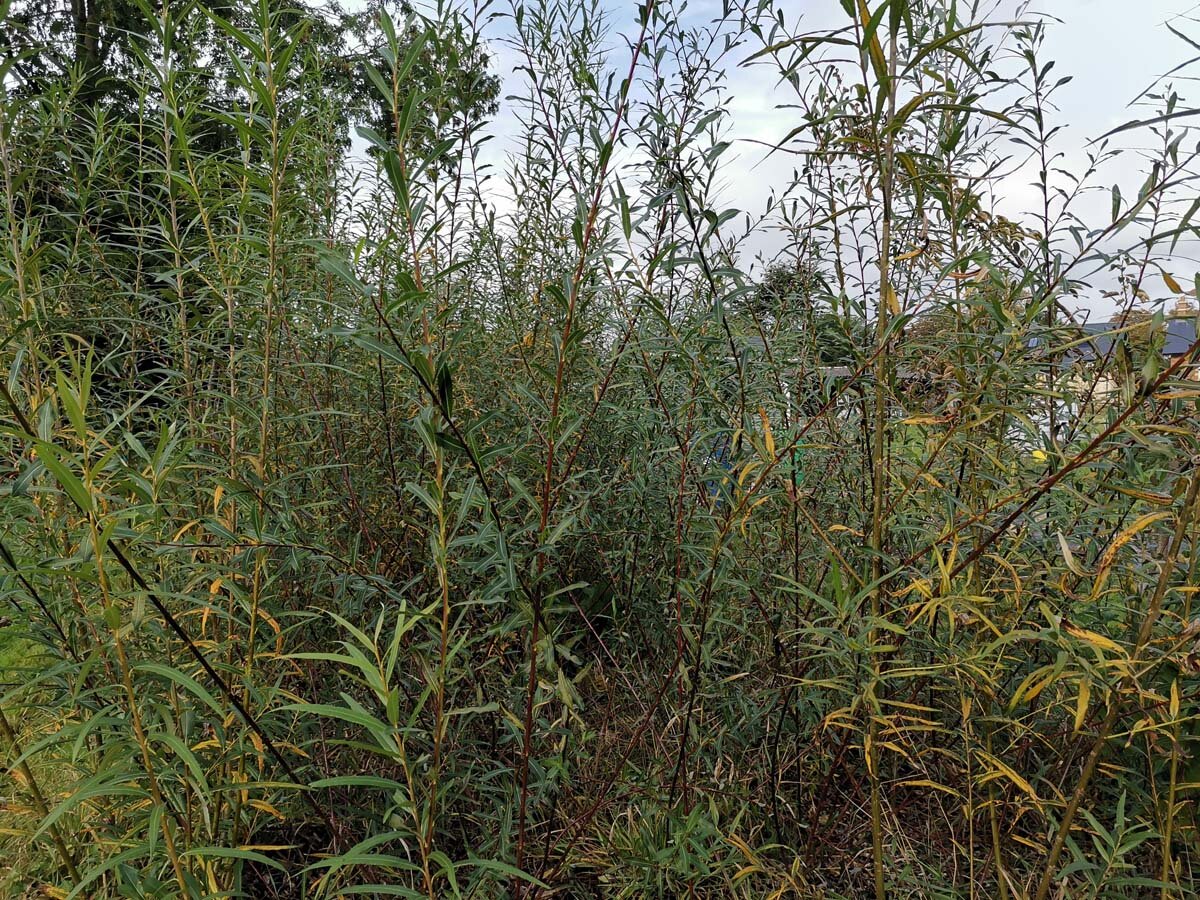
Willow is ready to harvest as soon as the leaves drop off in late Autumn and can be cut until spring

Purple willow cut, sorted to length and leaning against a willow and hazel fence we made on the same site

Green osier and the fiery tones of Yelverton
Craft Club at Peace Oak
We’ve started using the willow from our first year harvest at Peace oak for our Craft Club evenings: communal making sessions which also involve a campfire, fabulous guest tutors. lots of cake and potentially wine ; )
Oxford City Farm: community farming
Oxford City Farm
Our most recent site is at Oxford City Farm, a community-led charity in the heart of Oxford, where we have founded 3 willow beds and set up growing 6 different kinds of willow with cuttings from our varieties. They will be able to replenish and plant more next year from their own harvest. And we hope to be weaving wonders with them in the future!

A finished willow bed!


Planting (or "poinking") willow cuttings

Preparing willow rods for cutting


City Farm
Vincent’s Wood: Traditional Coppice
Coppicing is Cyclical
Our woodiest space is Vincent Wood, a traditionally coppiced woodland primarily of hazel wood.
Coppicing is creating vigorous growth of multi stemmed trees, ensuring a sustainable supply of timber for future generations, through cutting small patches of suitable woodland on a regular cyclical basis. It is the oldest known form of woodland management, there’s evidence that British woods have been coppiced for some 8,000 years.
Cutting an established tree down to it’s base instigates the fresh growth of many smaller shoots, which quickly grow upwards towards the light. After 7-15 years, these are then harvested, restarting the cycle once more. This renews constant fresh growth and the removal of old wood, allowing the tree to live for a lot longer than if it were left un-coppiced. Coppiced woodland also usually allows for far greater biodiversity due to the constant re-growth of different ages of wood.
In the cleared areas the light streams in and promotes a burst of ground flora from dormant seeds, plus its an opportunity for other species of trees like young oaks to get established.
Benefits for wildlife and ecology, and useful material for us
Partially coppicing even a small woodland increases the number of different plants and animal species that inhabit it. Removing some of the canopy through coppicing allows more light and heat to reach the forest floor. This presents an opportunity for woodland flowers, such as British bluebells, wood anemone, dog violets and St. John’s-wort to become established, making the area more suitable for many butterfly species and other woodland pollinators. New scrubby undergrowth creates habitat for nesting birds.
Coppicing produces a huge range of useful products and resources, from materials for basketry and furniture, to hedge stakes, fencing materials and bean poles as well as fascines for river bank stabilisation.
Vincent’s Wood - Hazel woodland
Vincent’s Wood is a beautiful small wood in Freeland with an amazing display of bluebells in the spring. Farming with nature custodian Robert Crocker has invited us to resume coppicing here. The wood is predominently hazel which is a particularly good tree for coppicing, and produces great material for our making.

Hazels ready for coppicing

Vincent's Wood is an established coppice, now ready for re-cutting
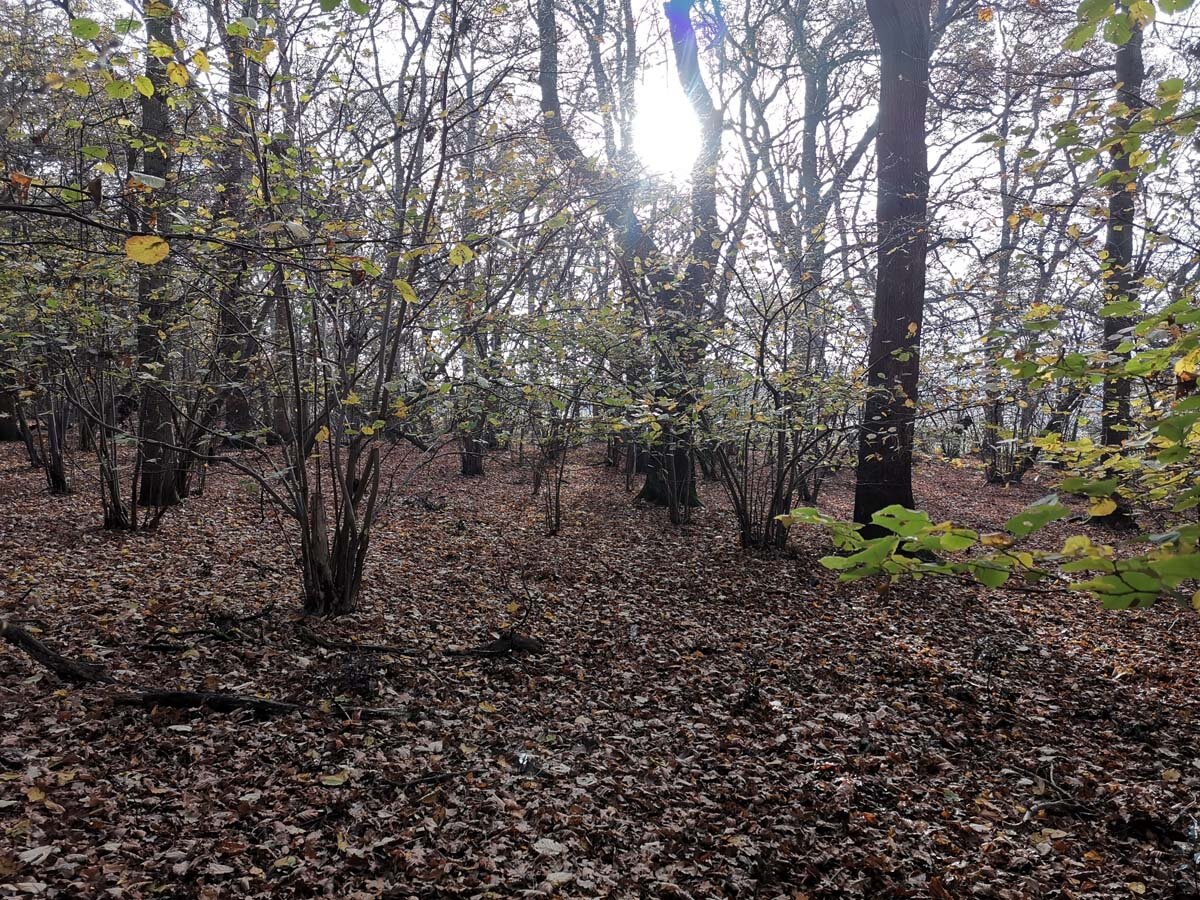
Cutting these hazels will allow more light to reach the forest floor


The hazel rods will be used for a wide variety of works

Vincent’s Wood - in the snow!
A beautiful day in January, the woods cloaked in fresh snowfall.
Ancient coppices are very often right next to villages and settlements, as historically the wood was used not just for firewood but all manner of building materials.


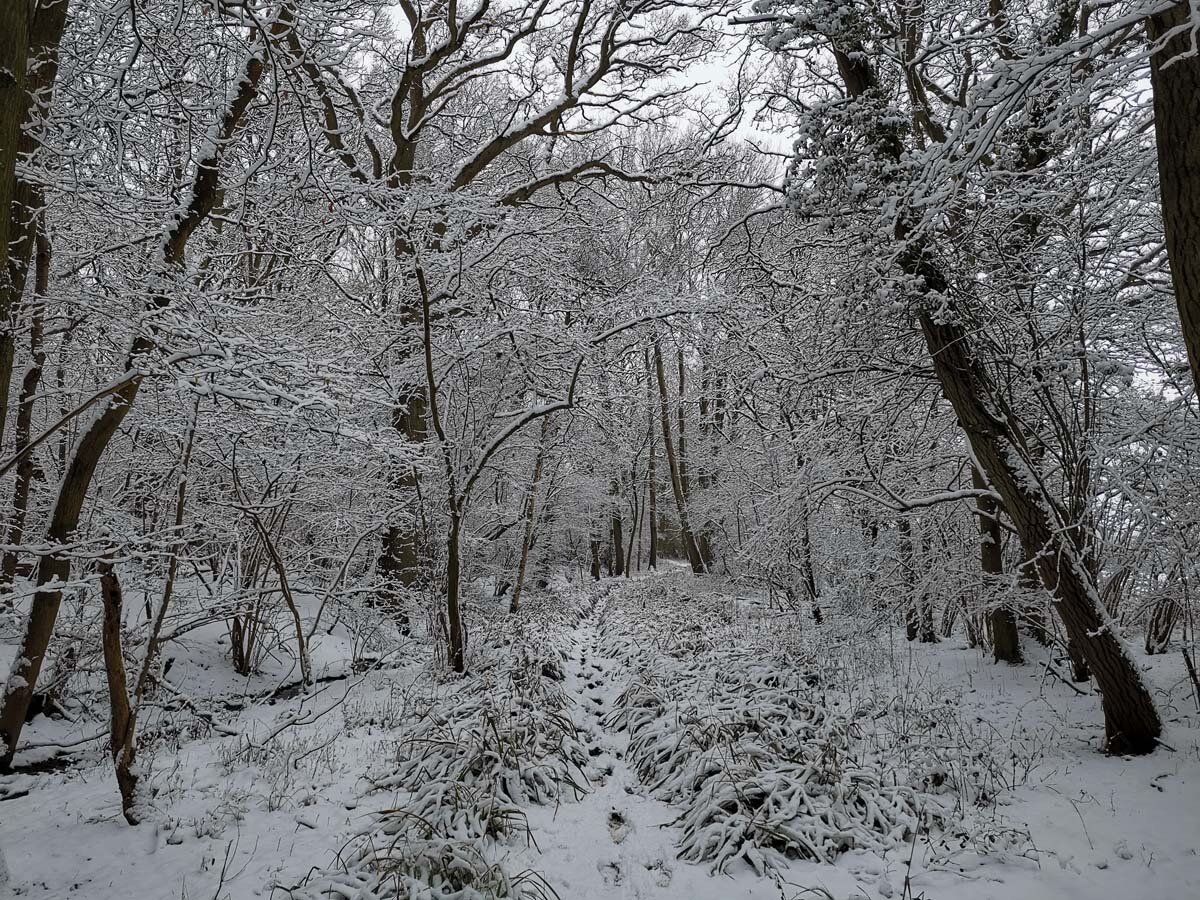

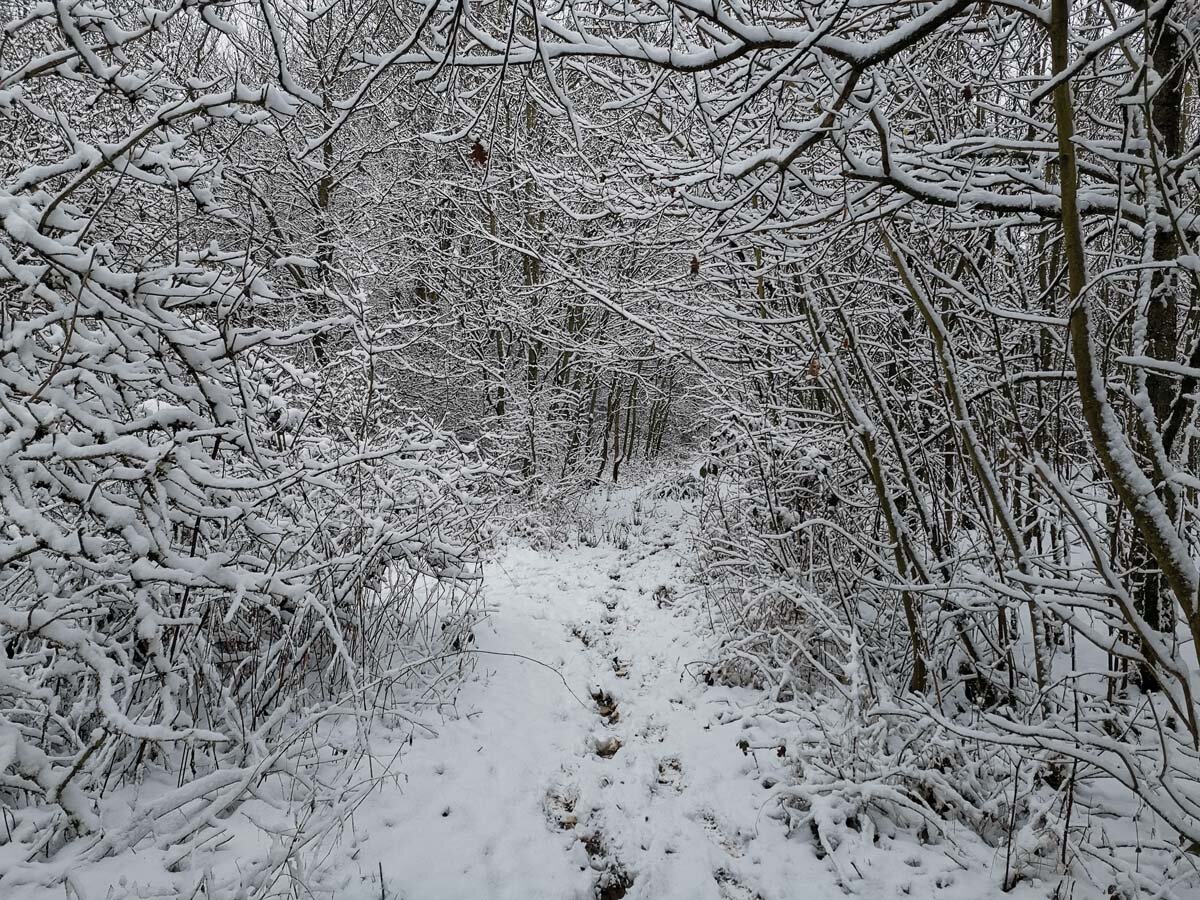

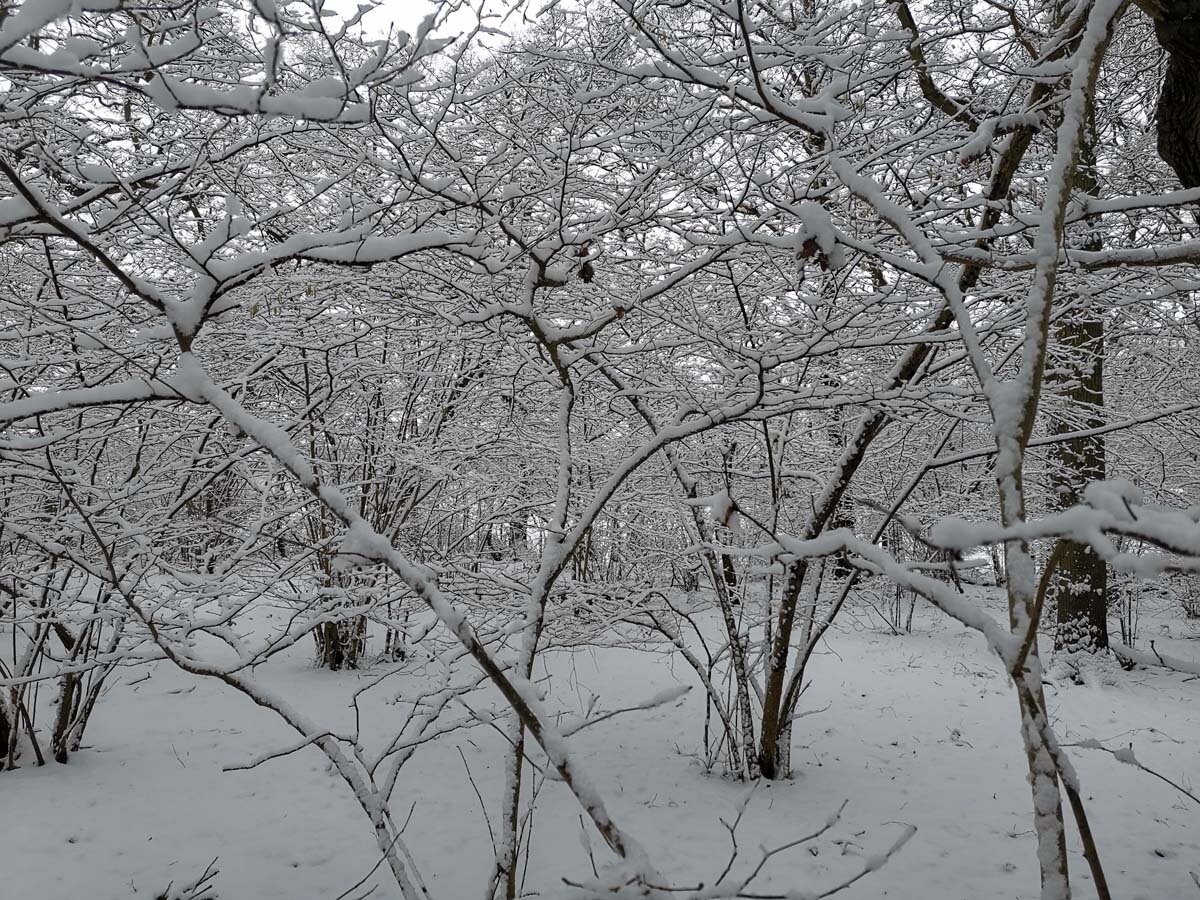
Volunteers working together in the woods
Gathering for a coppicing days, we’re trialing a “coppice-pollard” model: keeping the cut above the rabbit and munt-jack deer line, to avoid the use of protective fencing.
We have adopted a "high-cut" coppicing method formulated in Shotover's Brasenose wood from over 10 years experimentation. This means cutting at 80cm from ground level it maximises the diversity of the new ground flora and allows the hazel to do well, reducing the need for fencing.
Instead of using wire deer fence we weave brush fences around the newly laid and smaller hazels to discourage taller nibblers, whilst simultaneously creating habitat for littler species. This is a triple benefit; creating habitat, protecting new growth, and forming living sculpture.
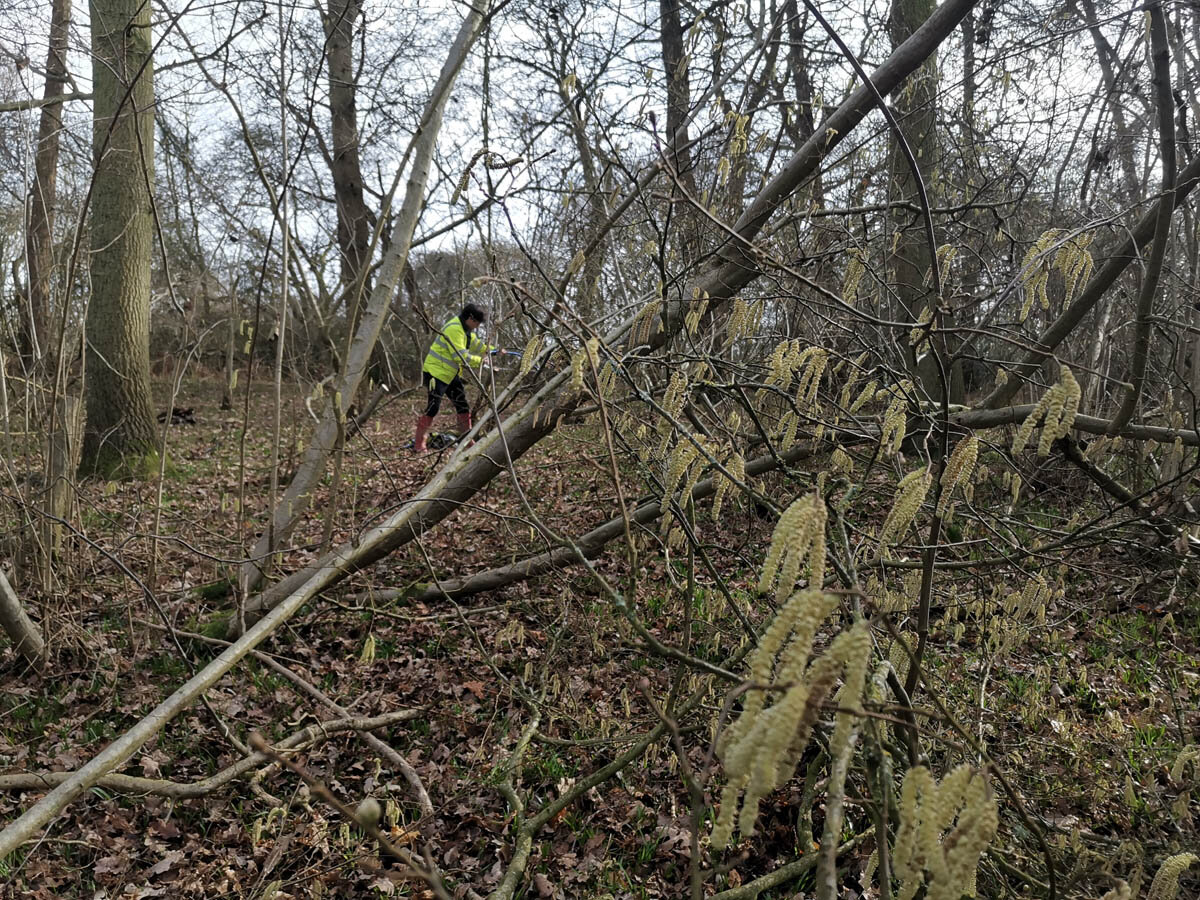

Coppicing using only hand tools is incredibly peaceful

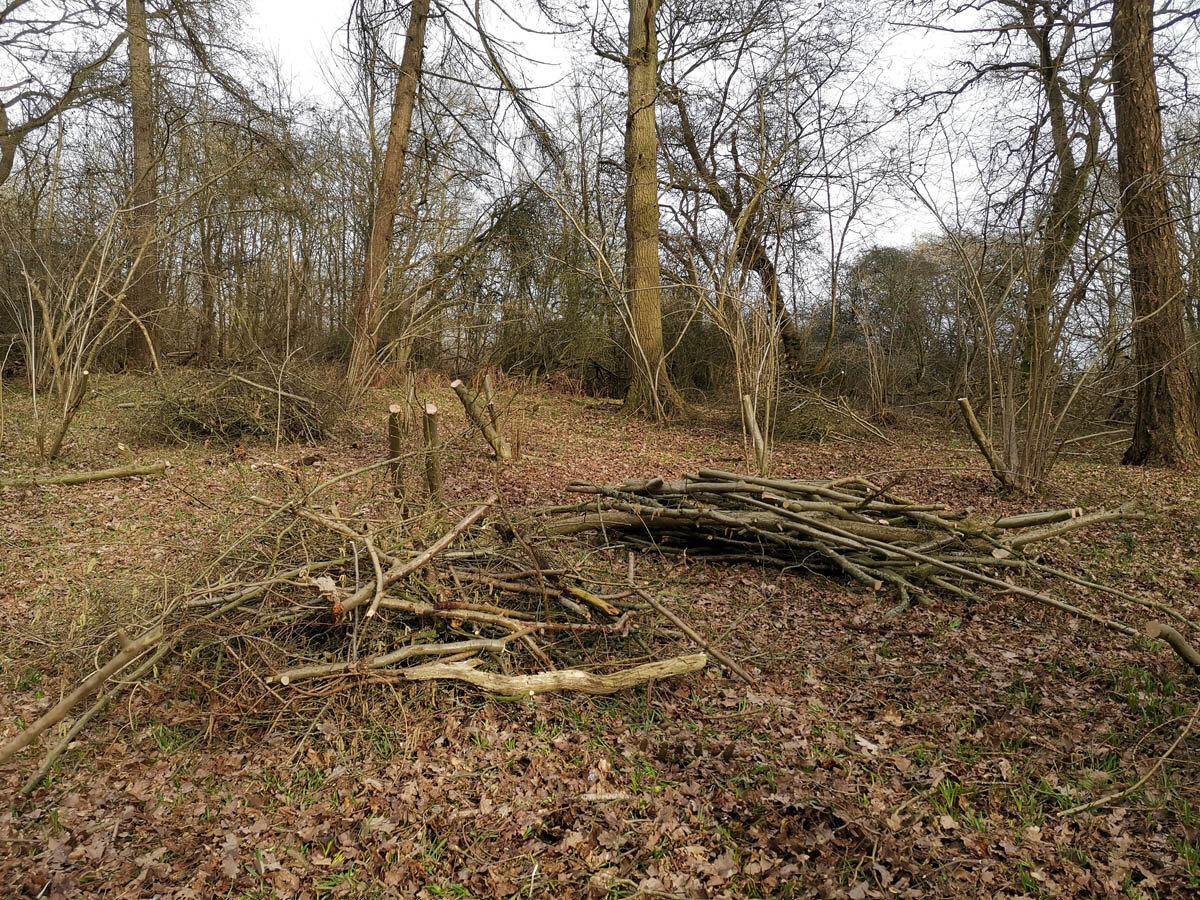
The experimental 80cm coppice-pollard
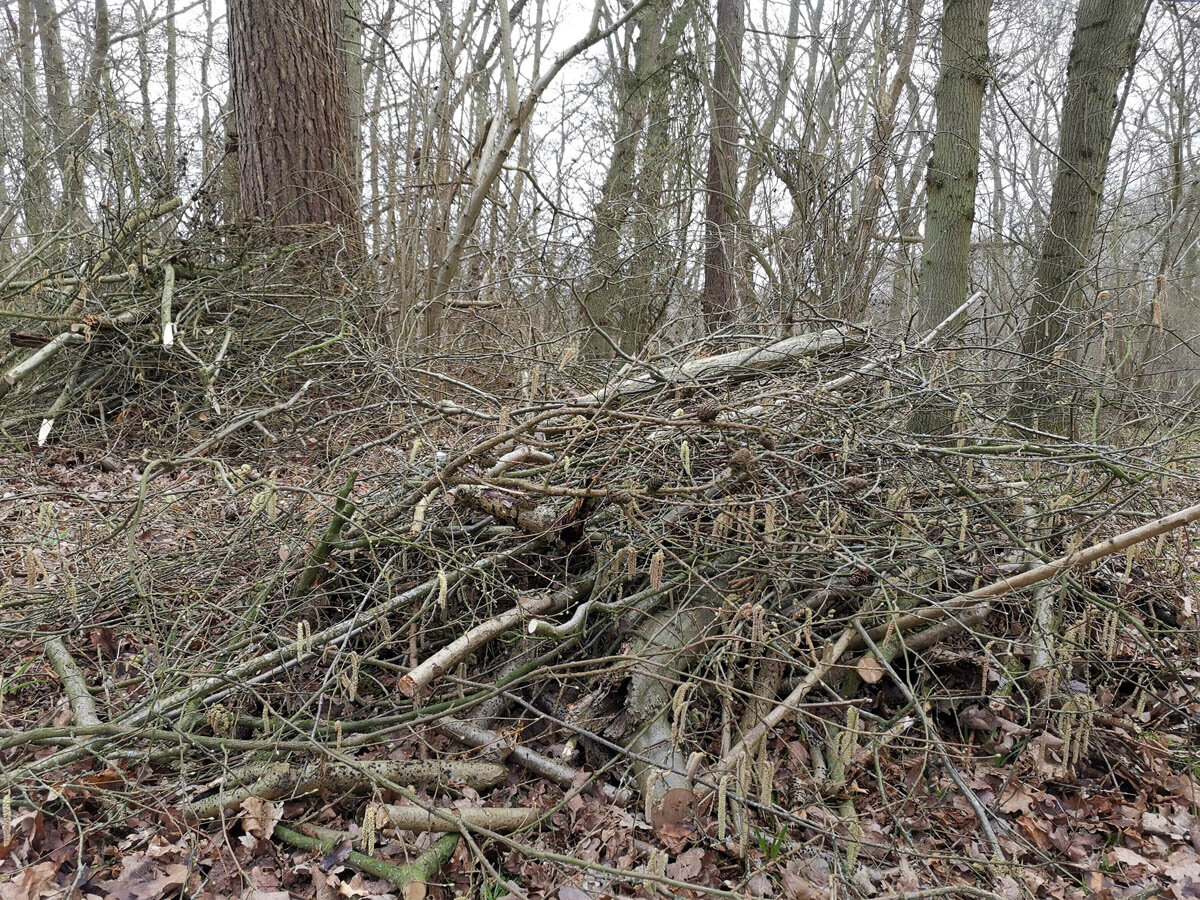
Habitat piles left in the woods
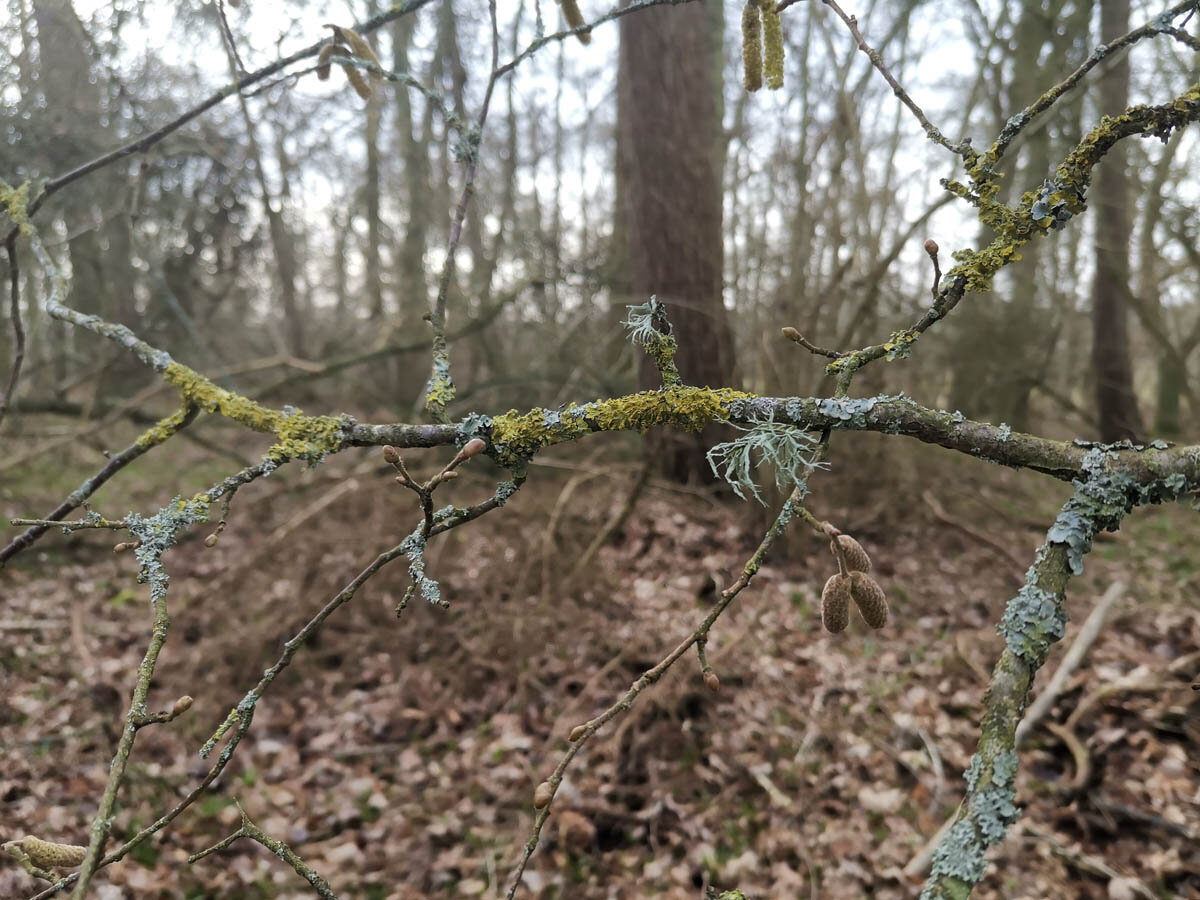
Lichens on older hazel are left in the woods
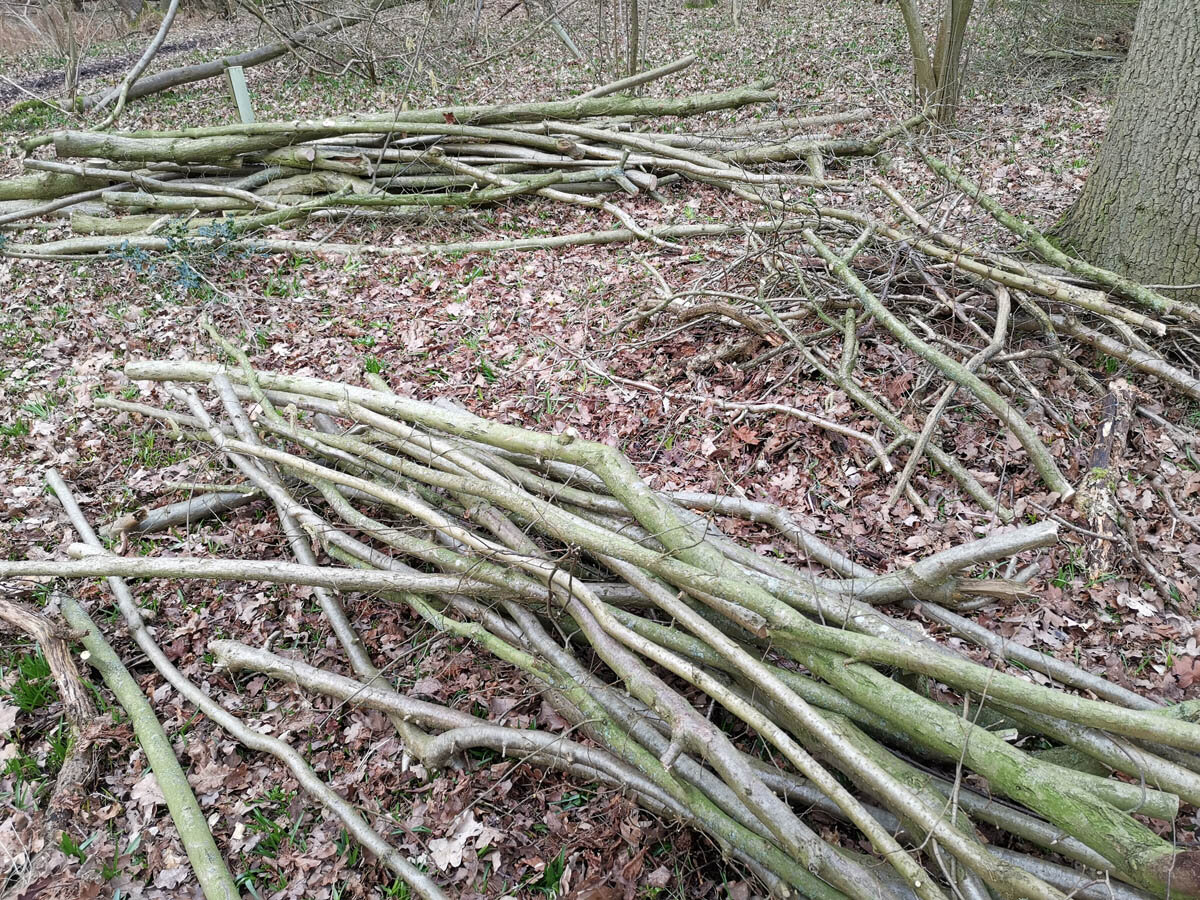
Hazel poles sorted to length
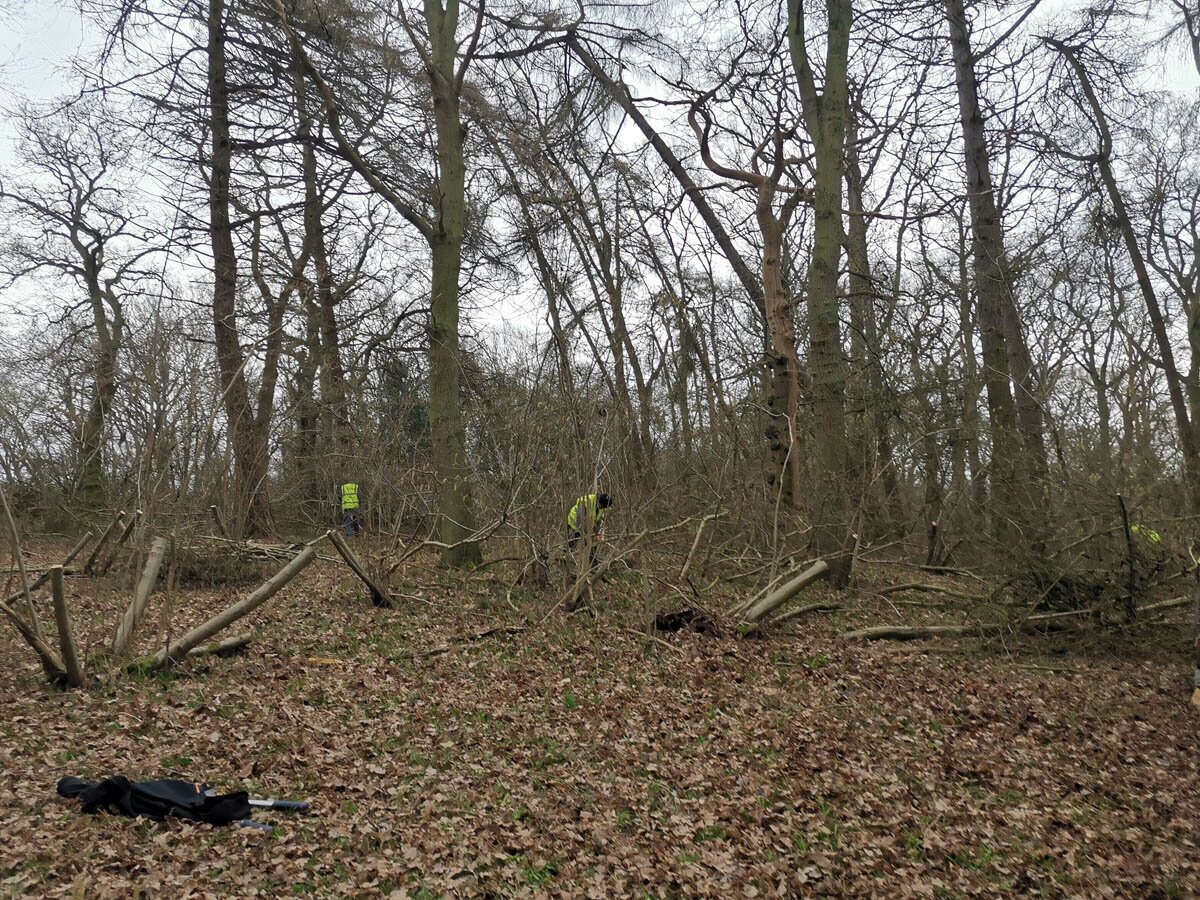
A clearing is created, the light will flood into this space and transform the forest floor
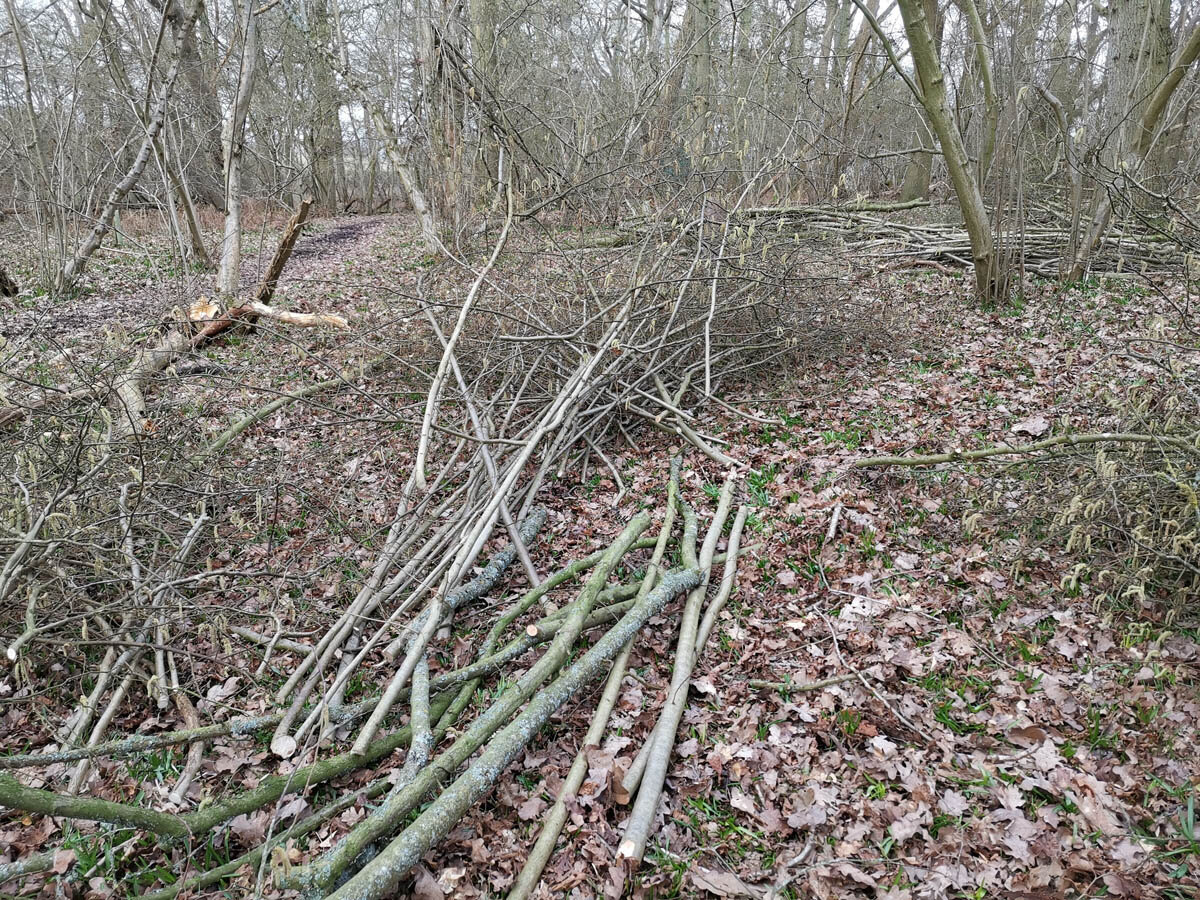
Some of this hazel is to make a community 'event tent', some will be for weaving

Carrying out material for weaving at the end of a long but peaceful day
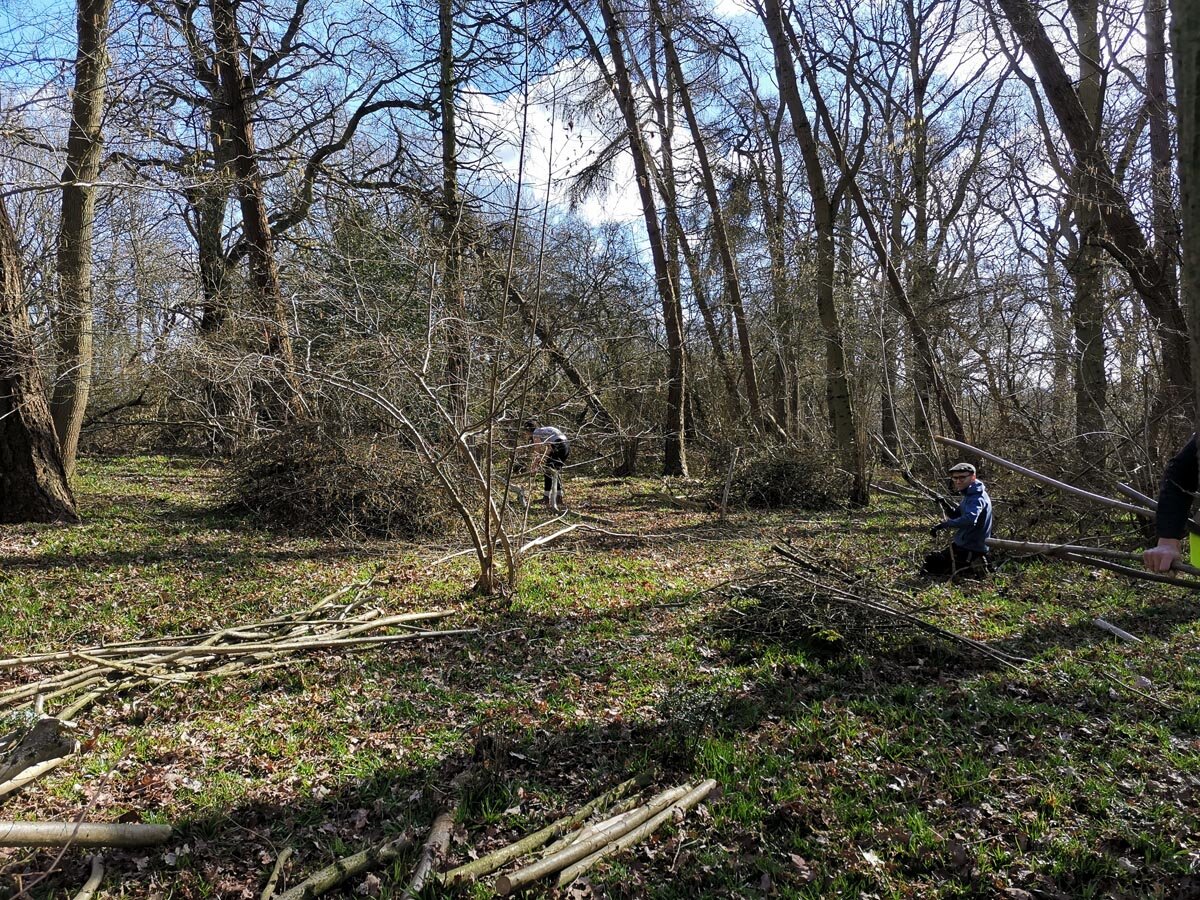


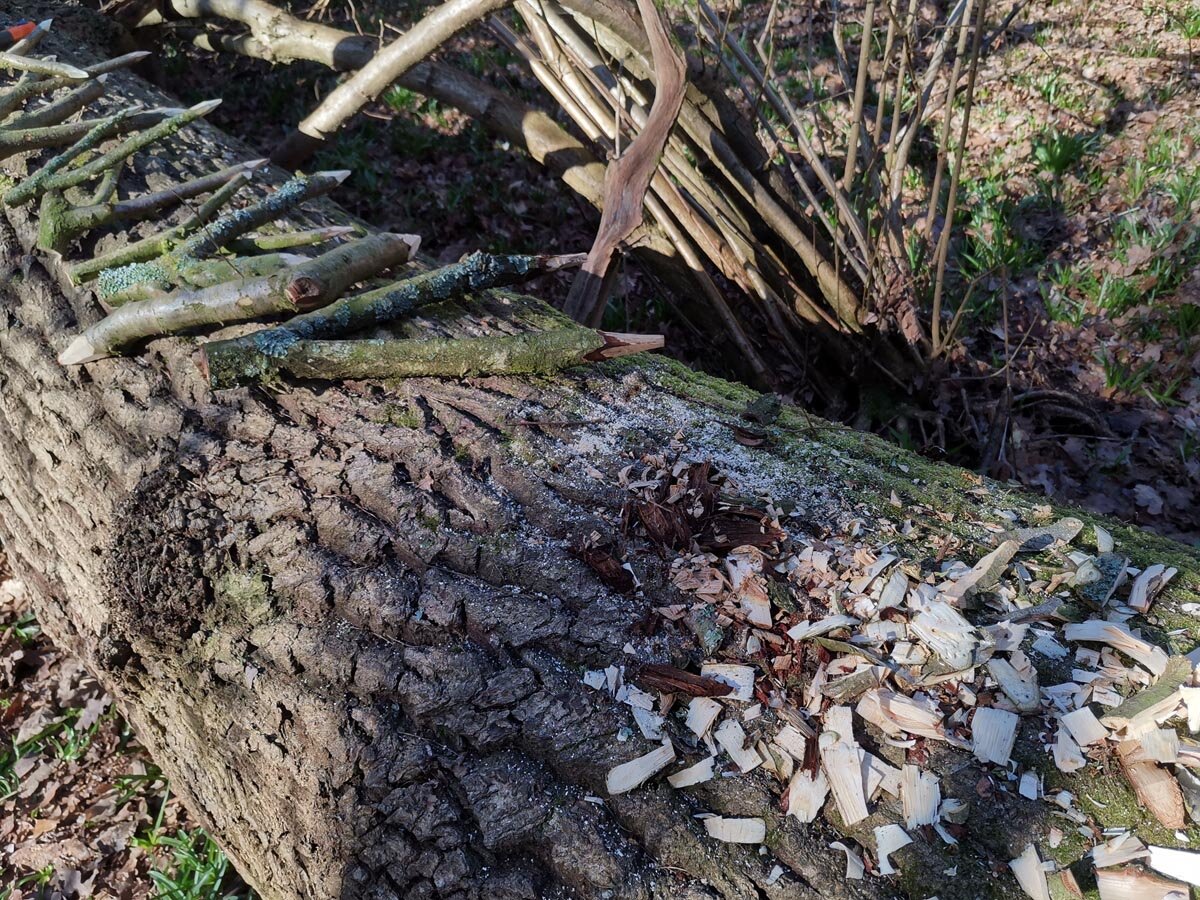
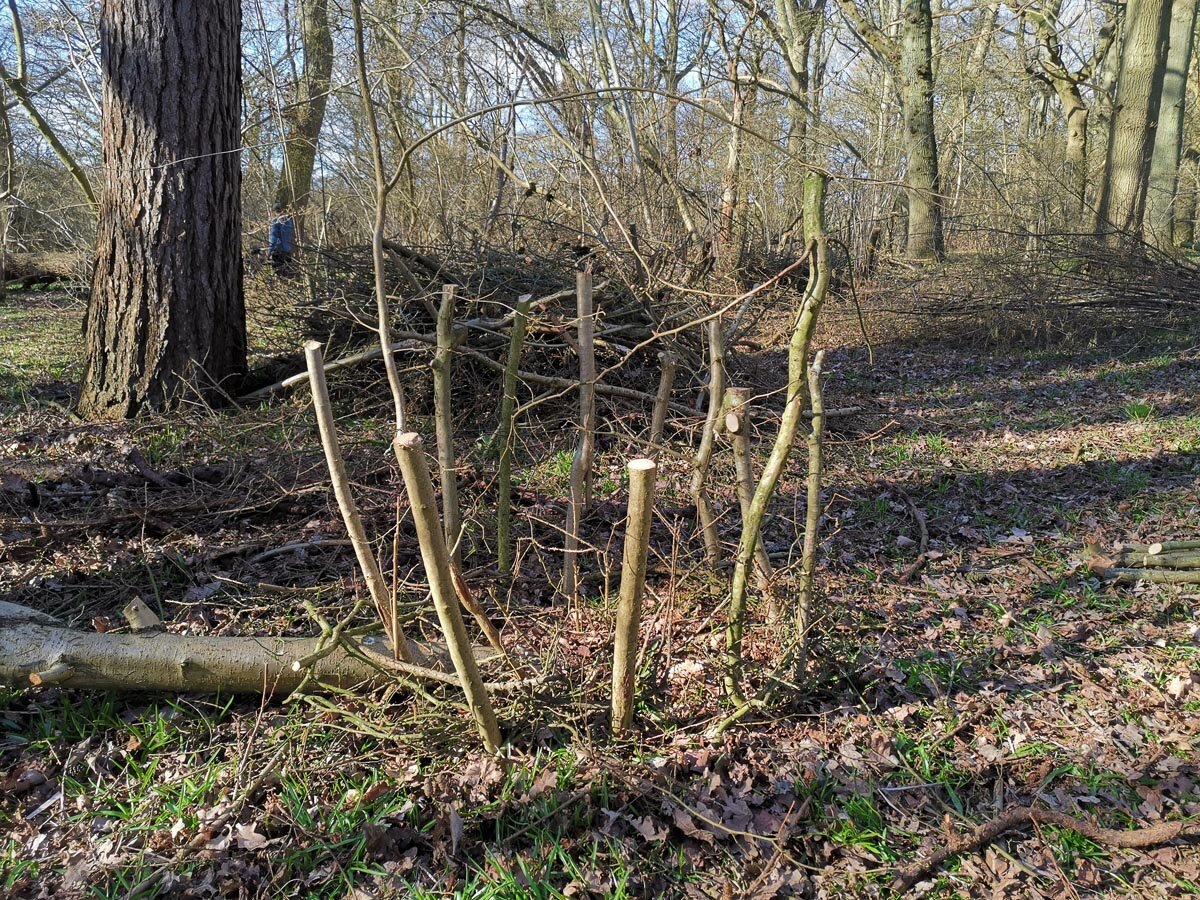
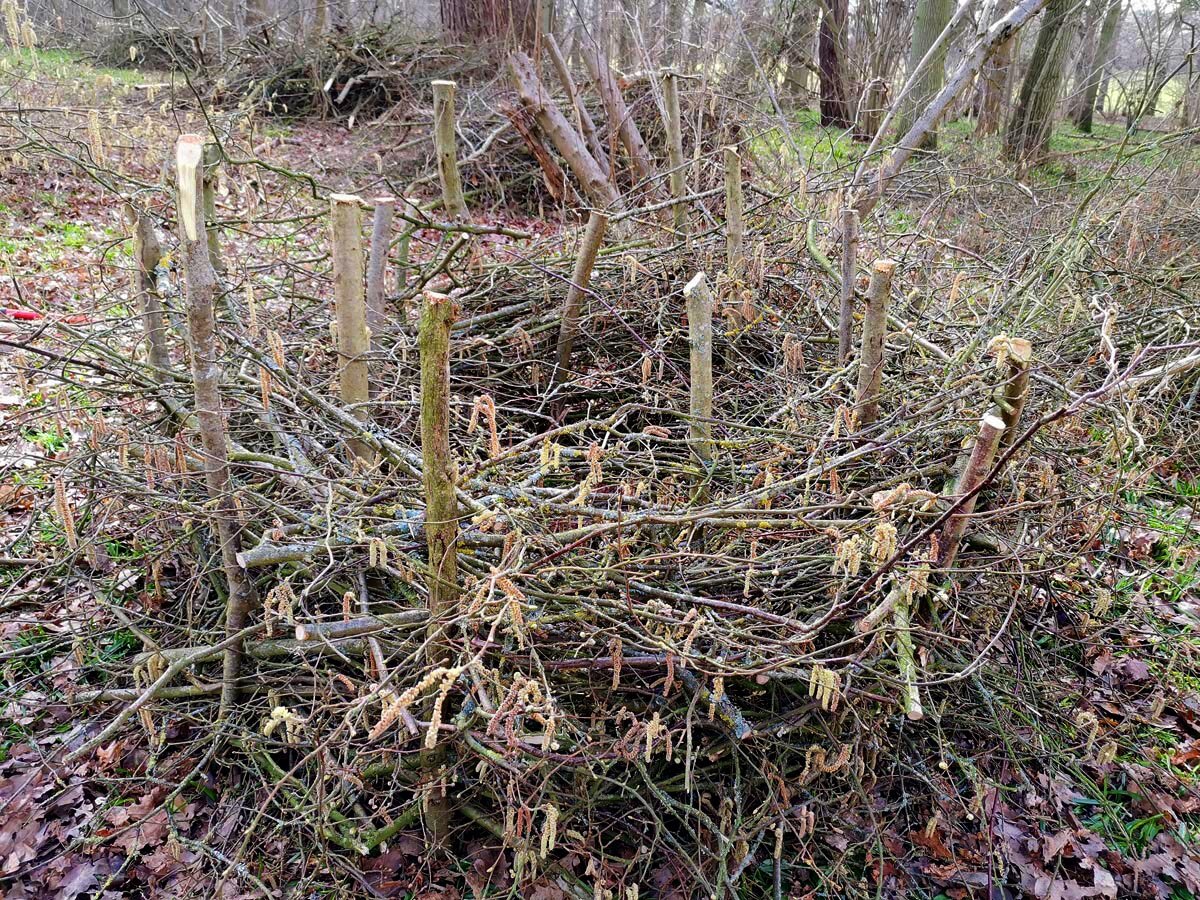
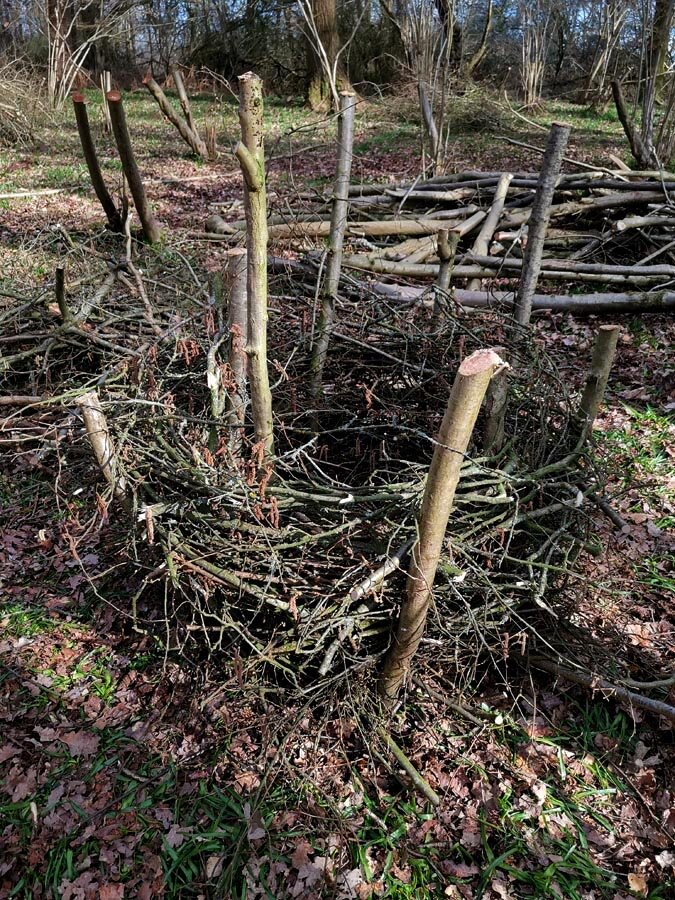
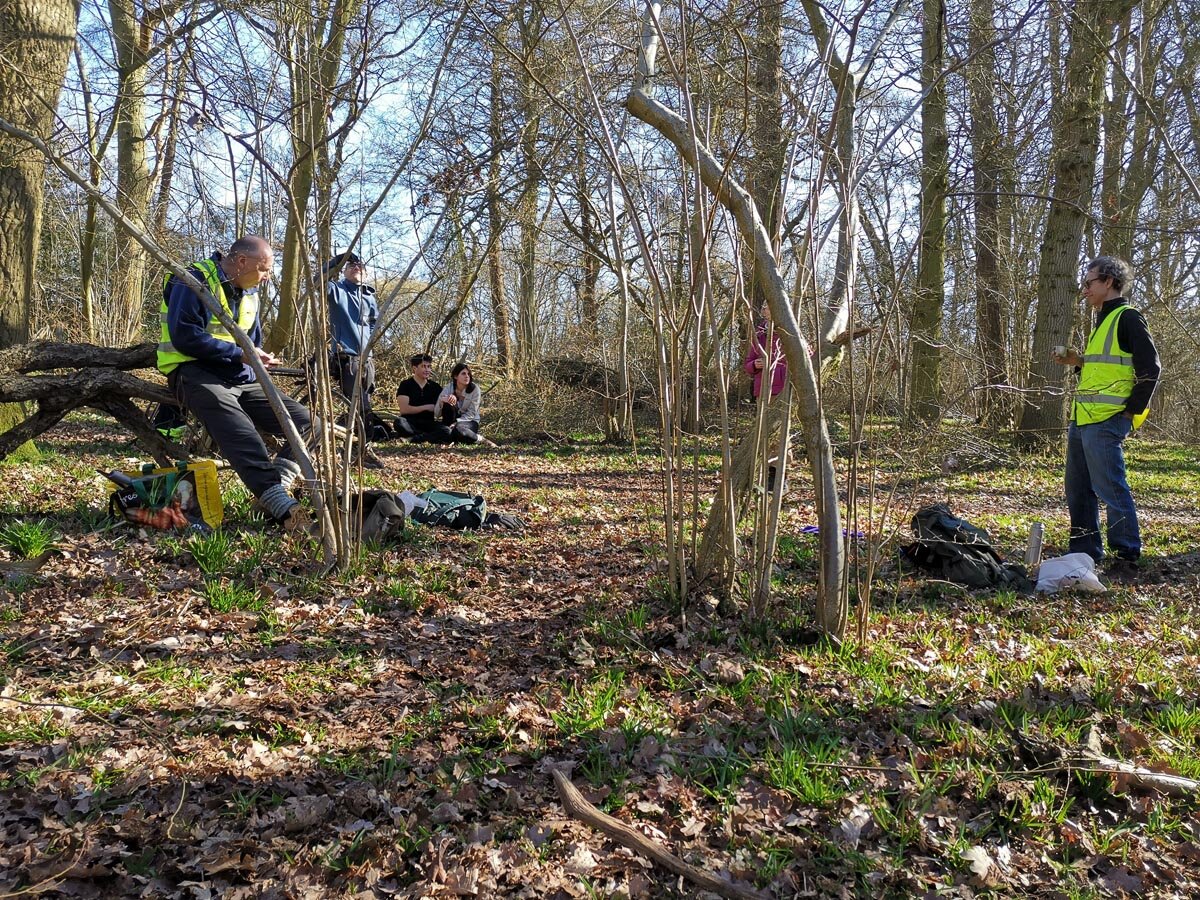

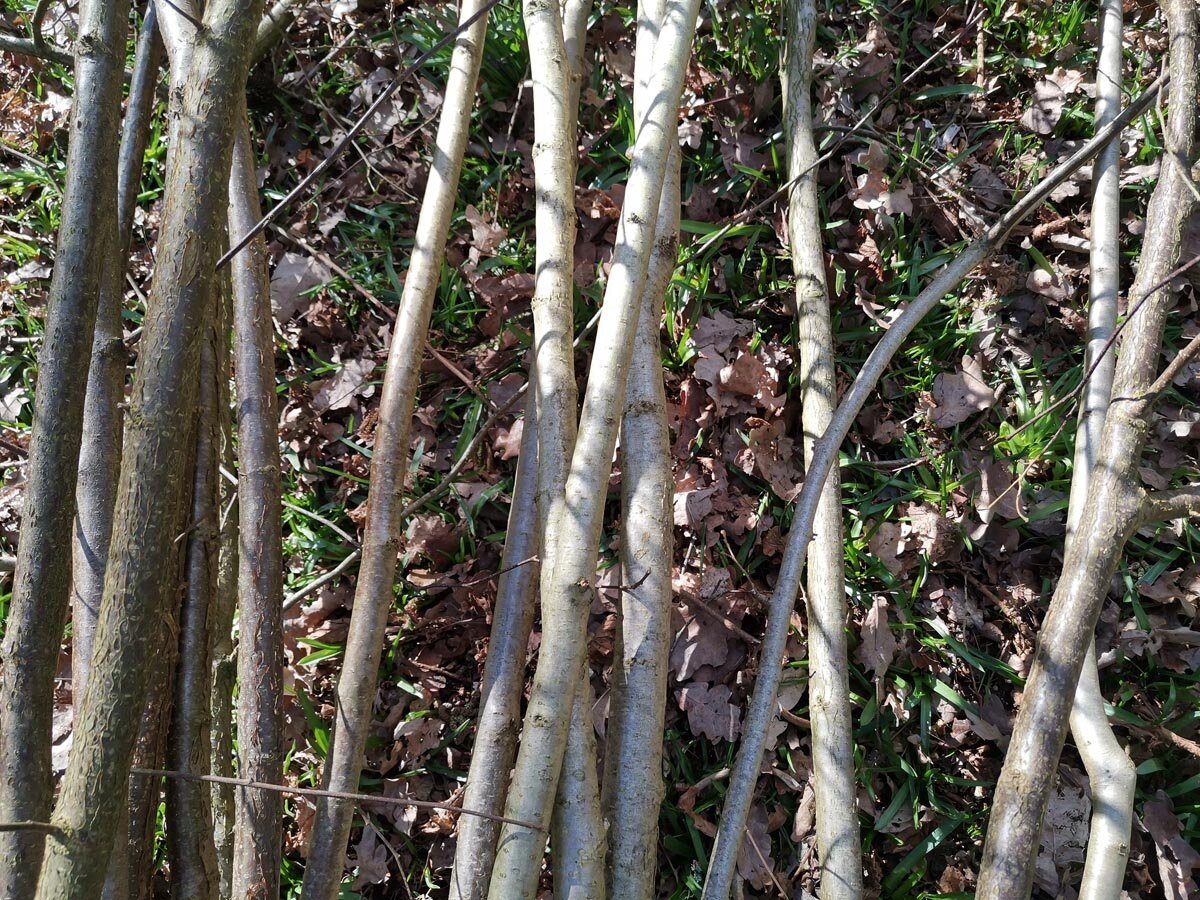
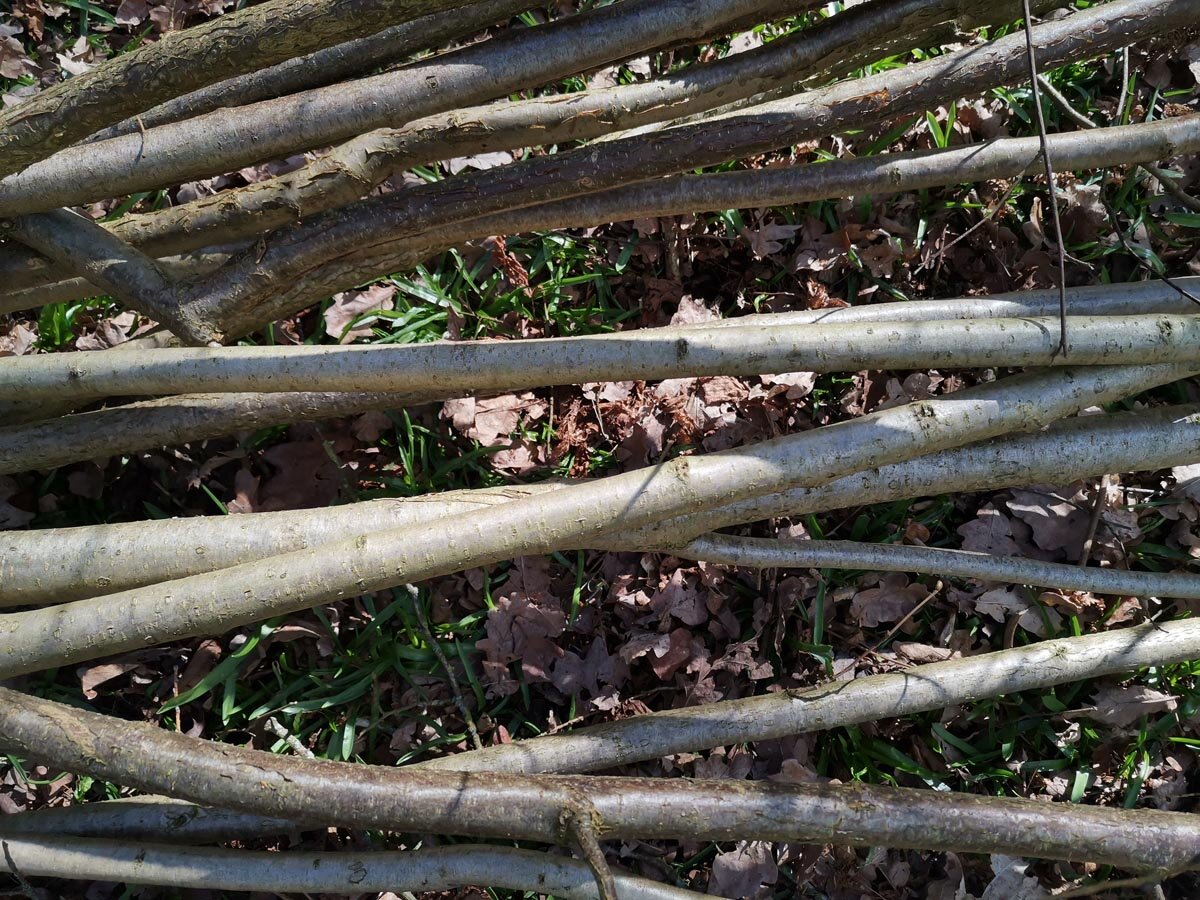


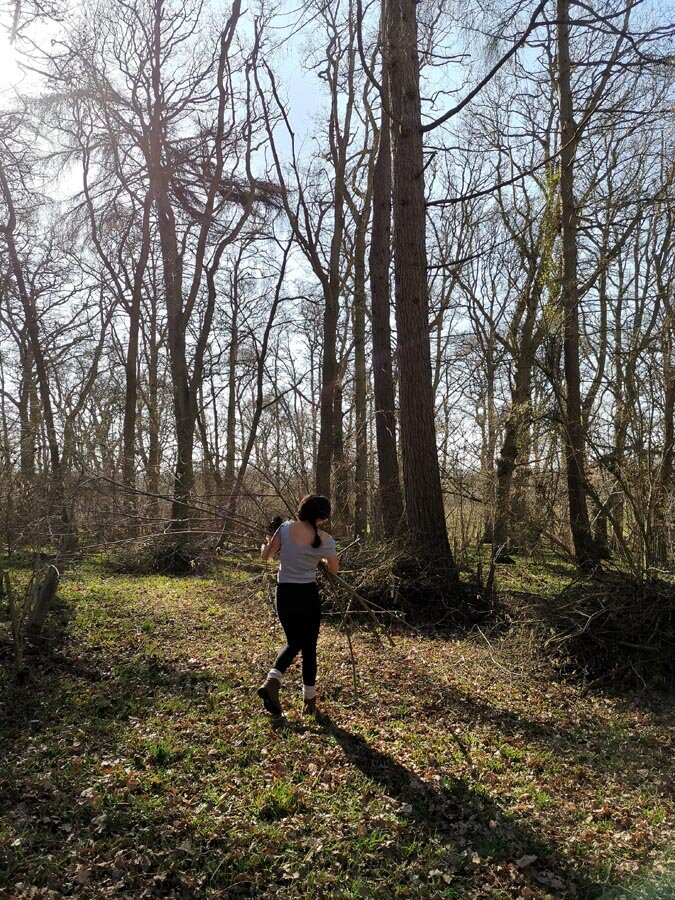

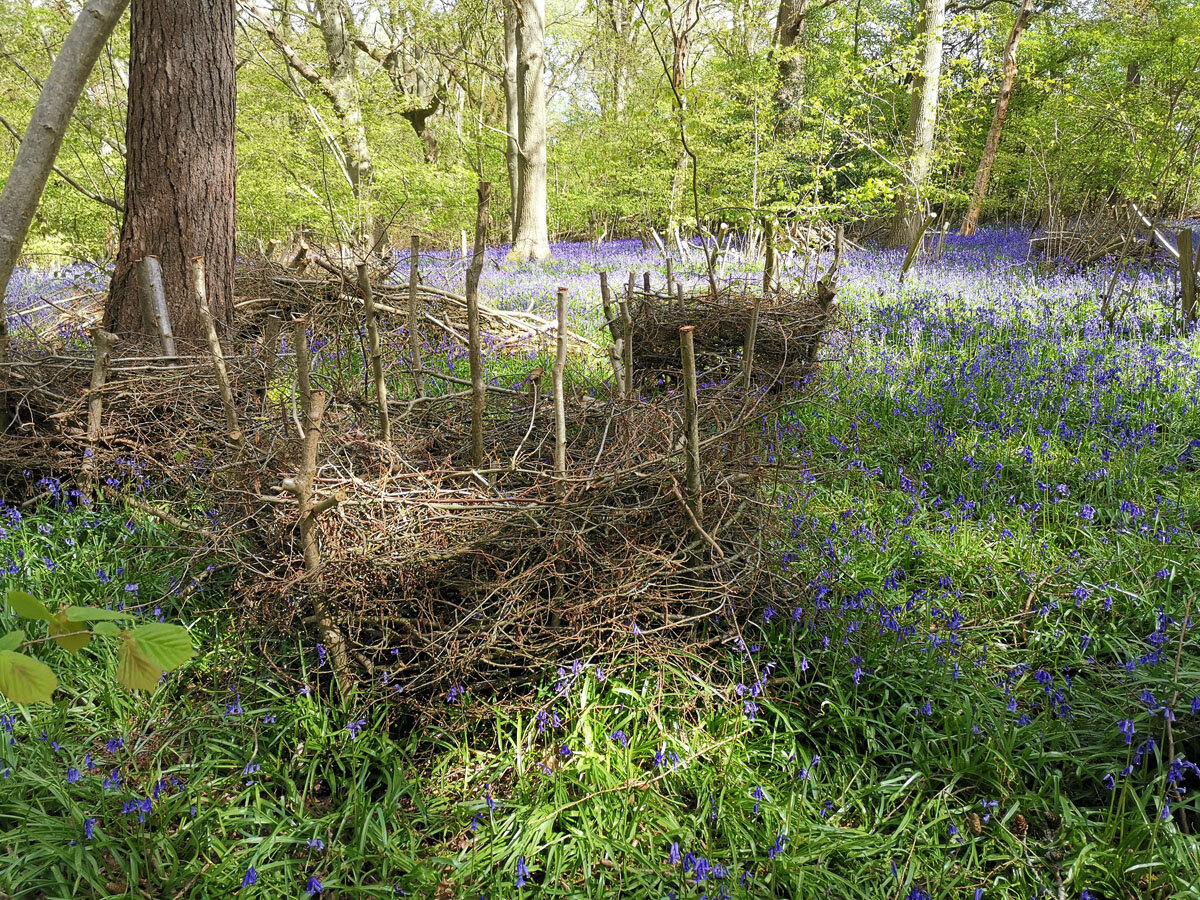
Deer guards amongst the bluebells
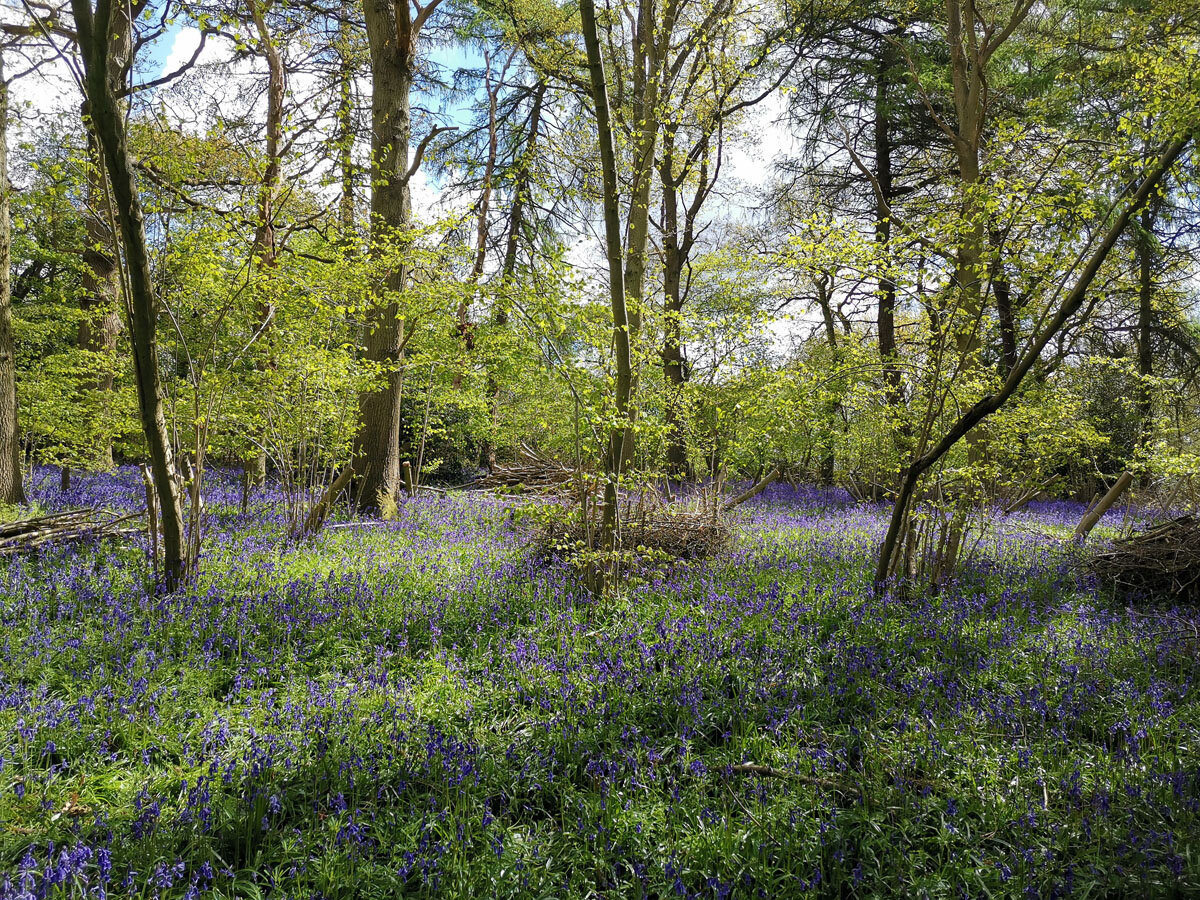

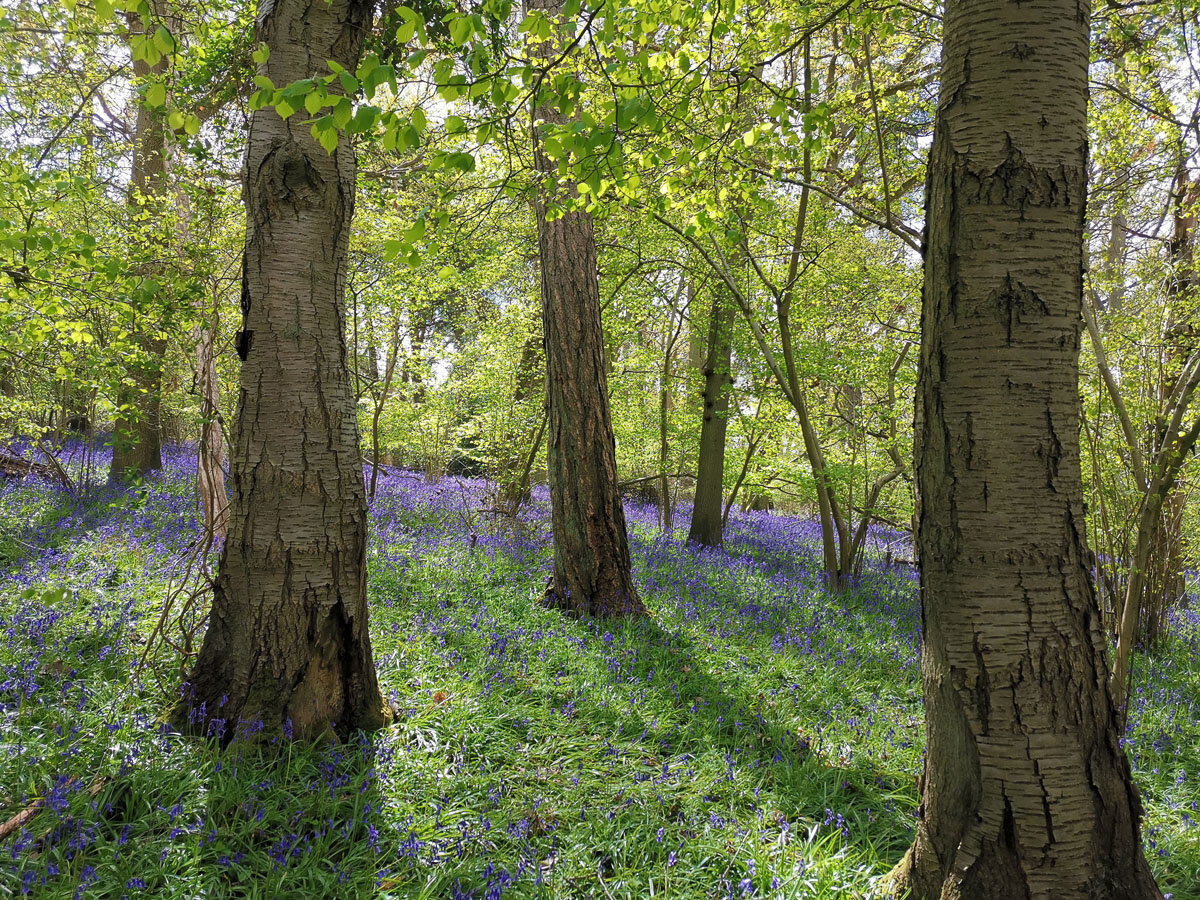
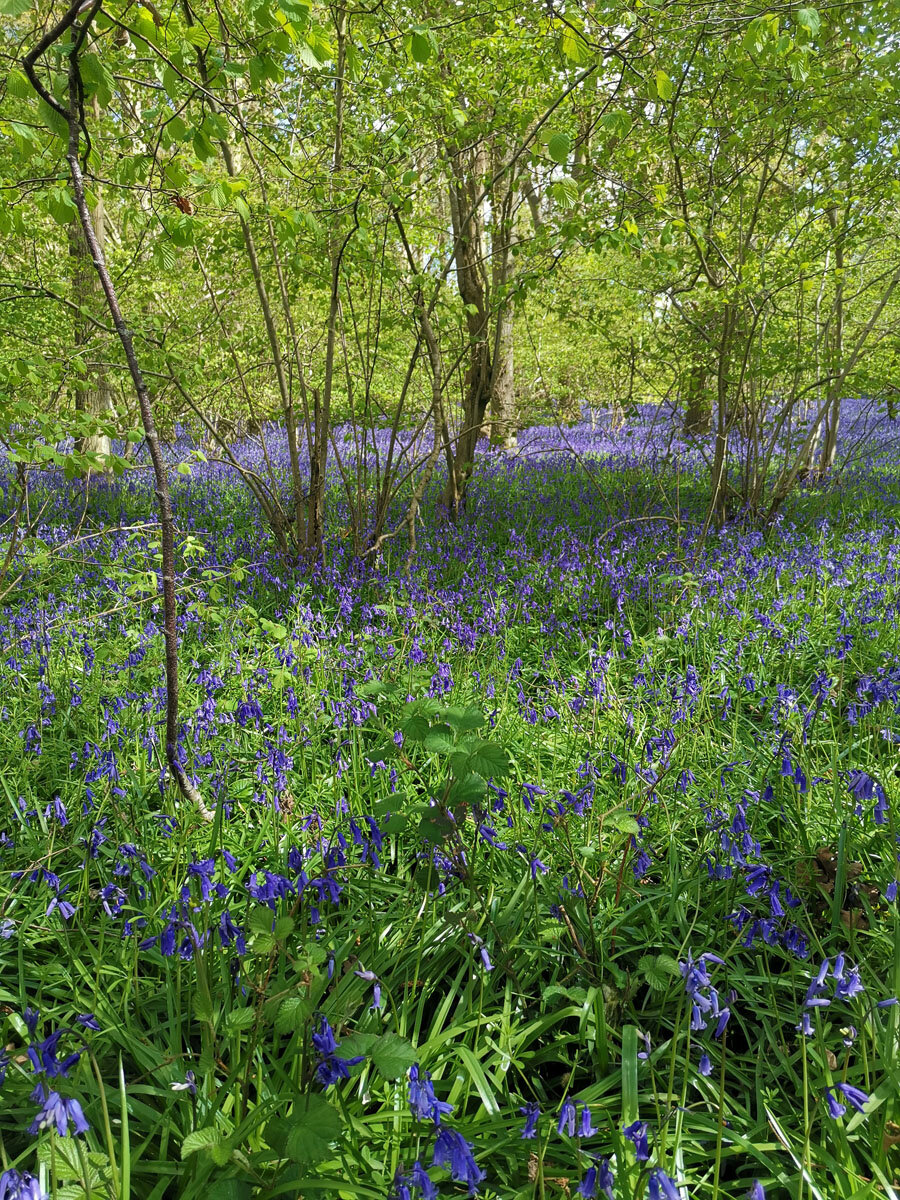
Bluebells in the coppiced wood
Carrying hazel for weaving out at the end of the day
All of the ‘twiggy’ bits we haven’t left as habitat piles will be used in weaving.
